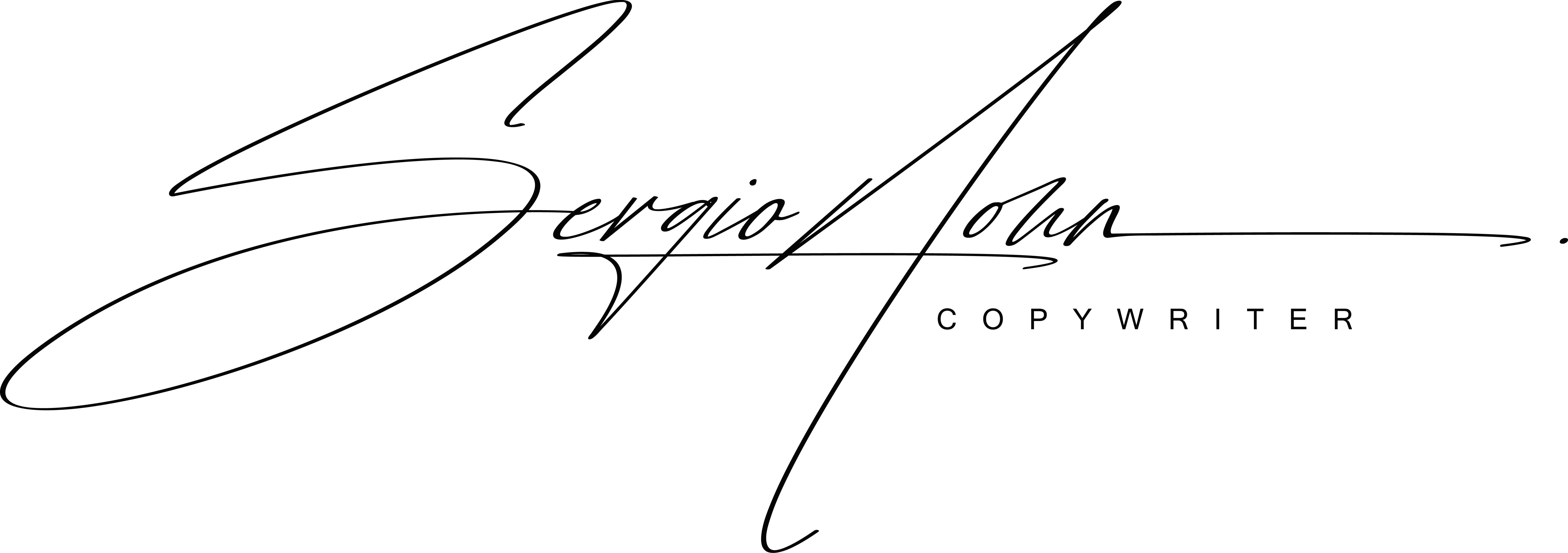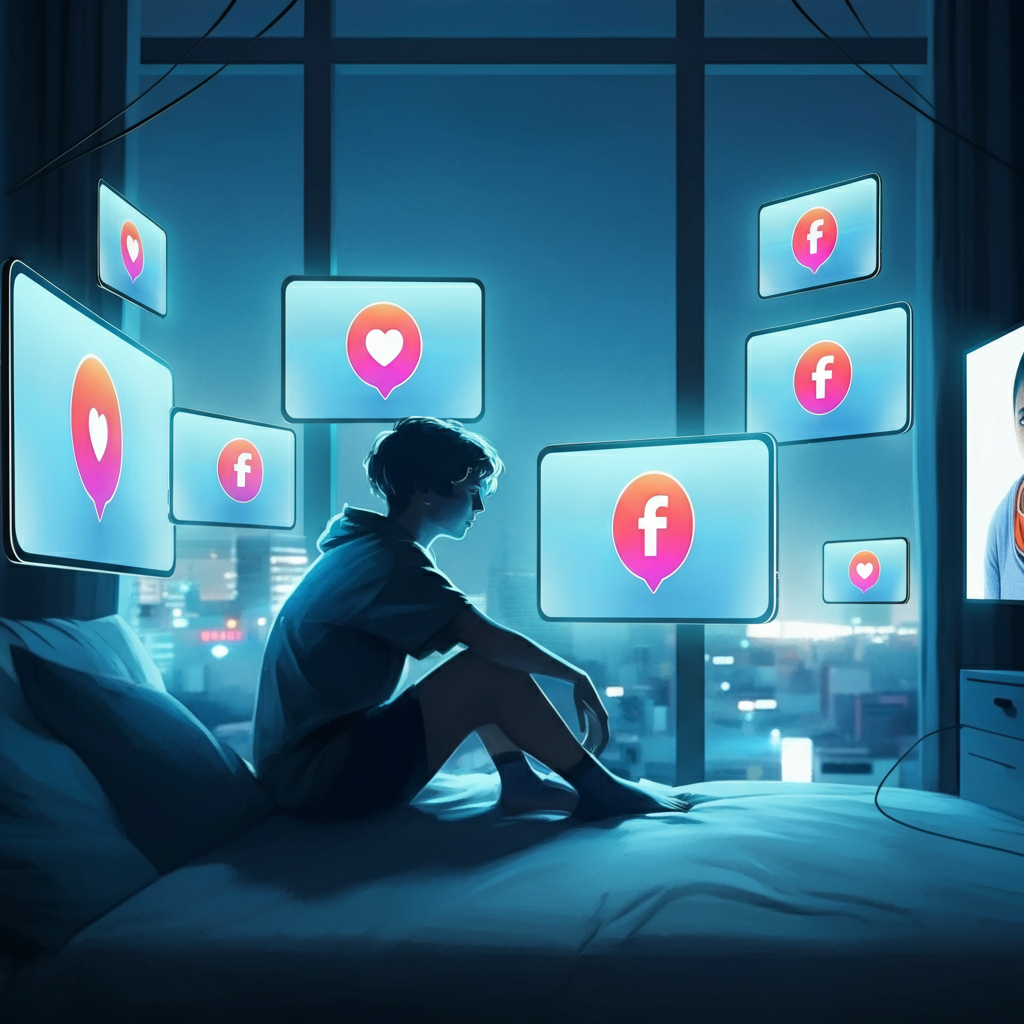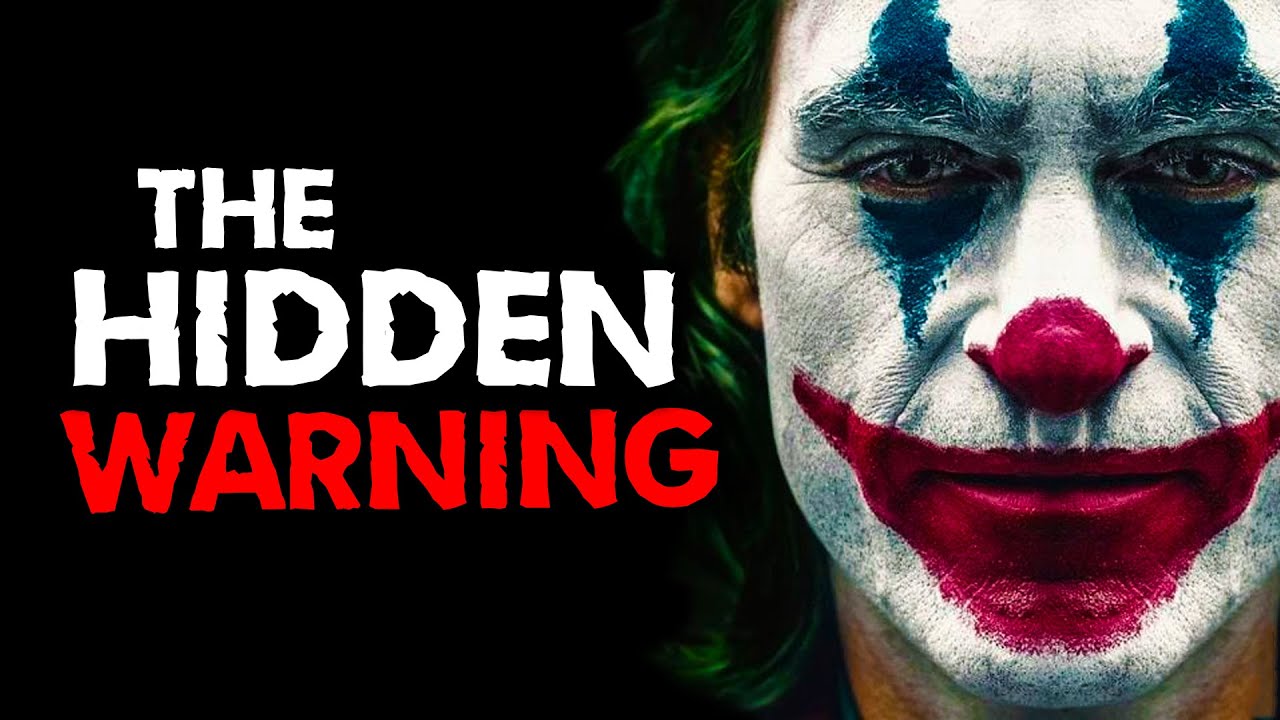
“The Joker,” with its stark depiction of societal decay, is a premonition of the potential collapse of modern Western Society. Today, this warning rings truer than ever. The movie offers an astute prediction of the genesis of the Revolution in the West; a prediction that, when juxtaposed with recent events, suggests that we are teetering on the edge of this precipice.
By studying the narrative of “The Joker,” we can identify four distinct stages that foreshadow societal collapse and revolution in the West: No Social Cohesion, Resentment, No Social Relations, and finally a breaking point.
The initial stage is marked by societal disconnection, where communities are dismantled, and loneliness becomes a pervasive reality.
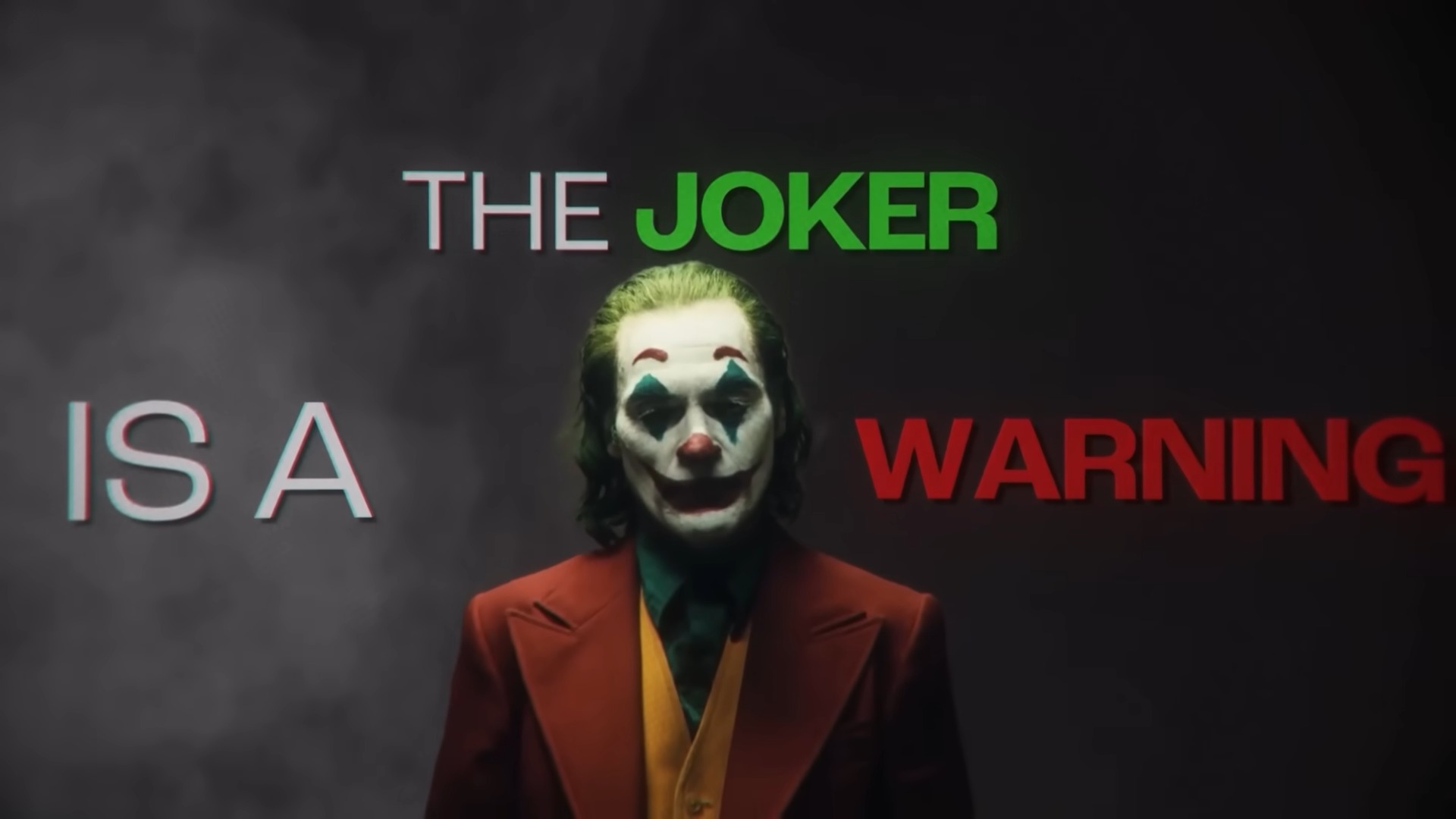
Stage 1: No Social Cohesion
As we delve into the first section of the movie, the opening shot of the Joker provides a mirrored reflection of our protagonist, Arthur, akin to peering through a Looking Glass. This reflection reveals a man steeped in sadness and vulnerability, forced to don a public mask to assimilate into the society he inhabits. The reason behind Arthur’s need to camouflage himself becomes evident as we witness the grim reality of his existence. Arthur is employed at a company dubbed “Hahas”, where he performs the role of a cheap clown, a fitting metaphor for his circumscribed role in society. Despite the jovial nature associated with his profession, his life is far from the typical cheeriness and exuberance of a circus.
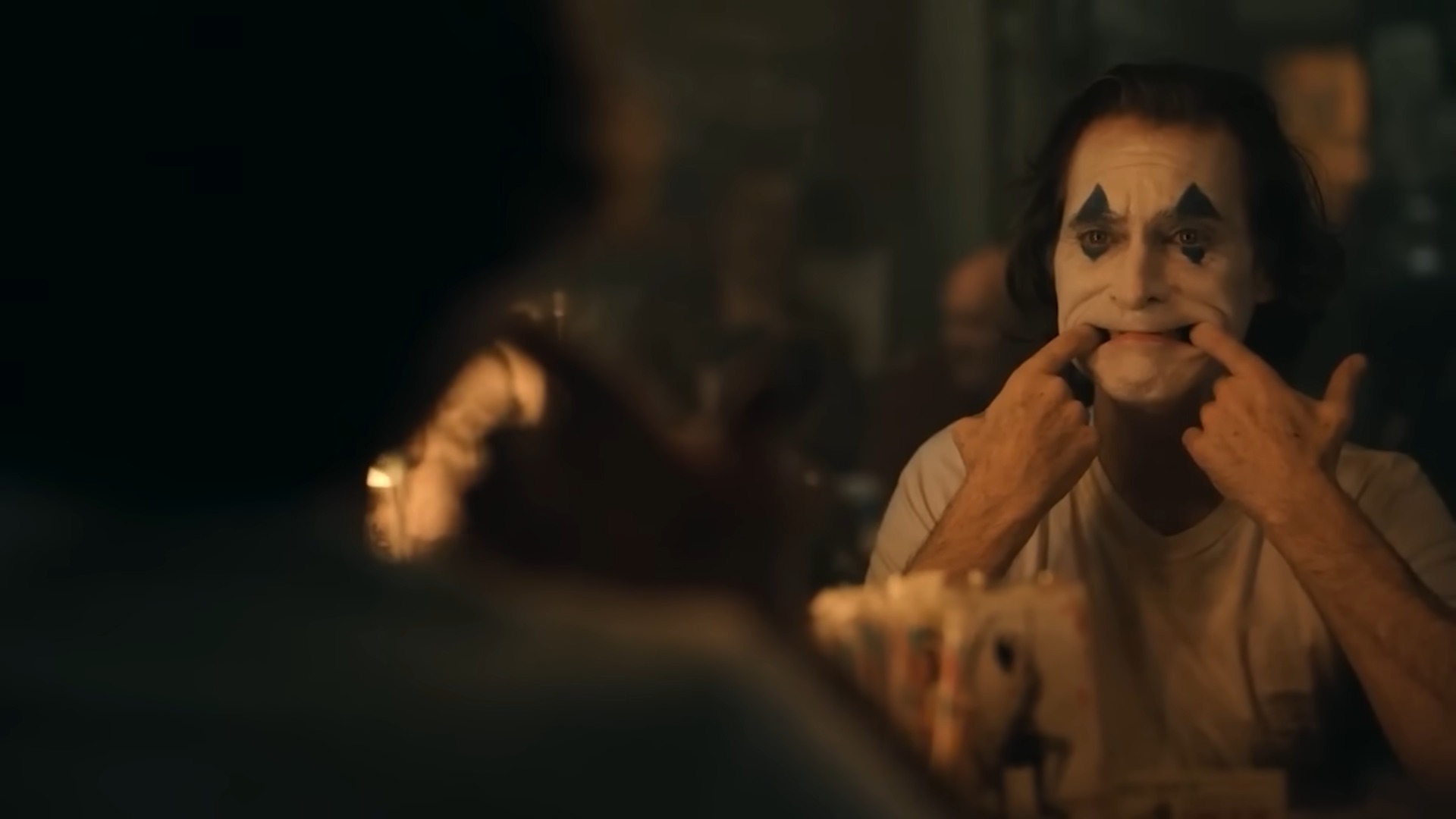
However, instead of basking in the limelight of the circus ring, Arthur is relegated to the fringes, spinning signs on busy streets and taking on other menial tasks. His mundane existence is disrupted one day when, while performing a sign routine, a gang of reckless teenagers snatch his sign and bolt. Without a moment’s hesitation, Arthur gives chase, only to be ambushed and struck with his sign. As he lies helpless on the concrete, the bandits add insult to injury, subjecting him to a brutal beating. This encounter depicts the initial fissures in Gotham’s society, a tangible consequence of the absence of social cohesion. The scene serves as a grim testament to a society where empathy and community have been replaced by opportunism and violence, setting the stage for the impending societal collapse.
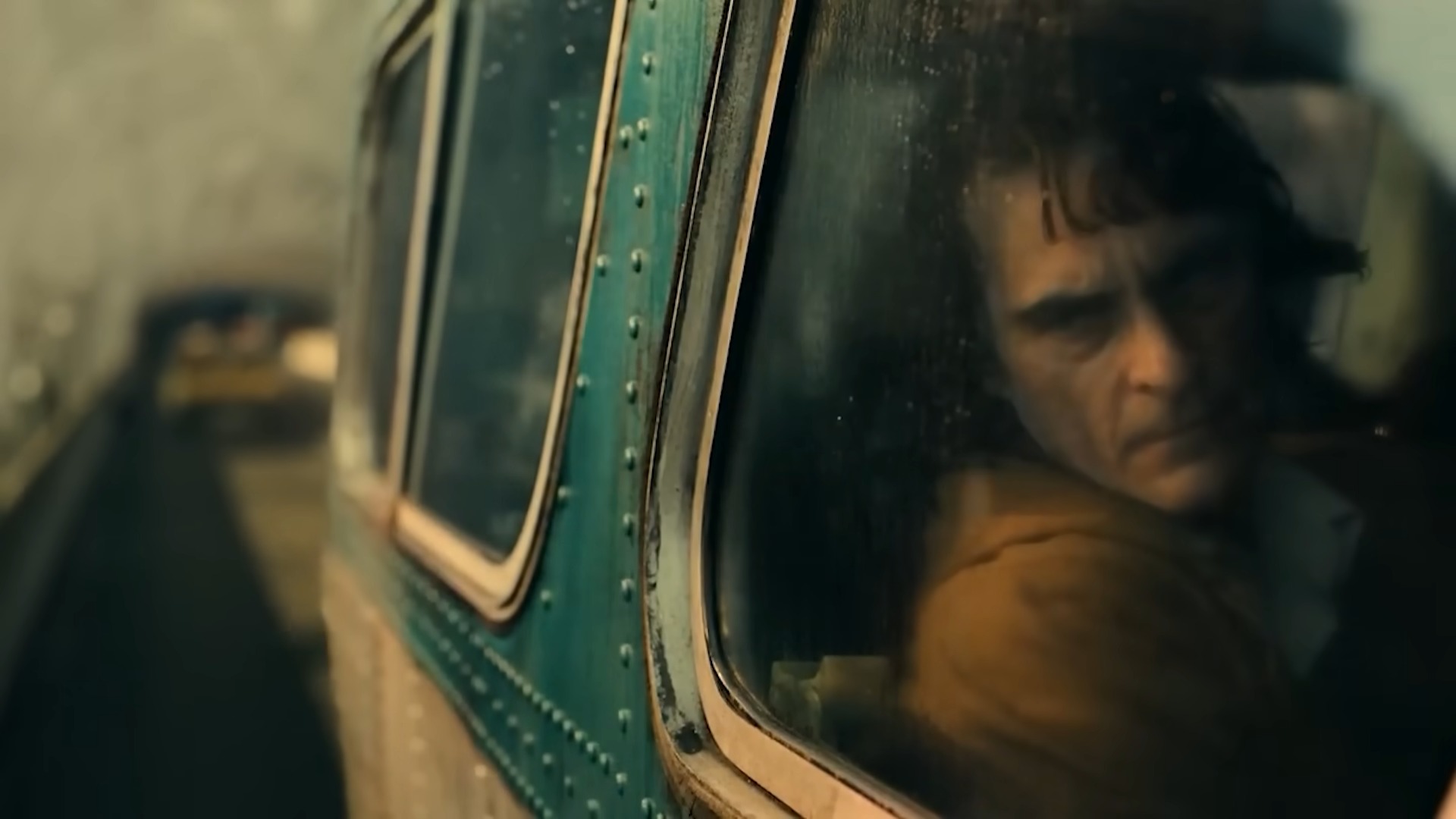
The Looking Glass Self is a sociological concept that reflects how our self-perceptions are shaped by our perceptions of how others see us. This notion becomes increasingly significant as we delve deeper into Arthur’s psychology. The harsh reality is that Arthur lives in a society where no one seems to care about him or his well-being. Every interaction, every glance, every word uttered by those around him serves only to reinforce his feelings of insignificance and isolation.
In the bustling metropolis that is Gotham, Arthur’s plight goes unnoticed. Despite the evident cruelty inflicted upon him, passersby offer little more than indifferent glances. No one intervenes, no one offers a helping hand. This lack of empathy and understanding echoes the reality of life in Western mega-cities, where individuals often feel lost in the crowd, their struggles rendered invisible amidst the multitude of faces.
Arthur’s sense of self becomes distorted, molded by the apathy and disregard of those around him. He internalizes these negative experiences, and his self-perception reflects the societal neglect he experiences. This is the essence of the Looking Glass Self, and it serves as a psychological accelerator, hastening Arthur’s descent into the chaotic mindset that will later produce the Joker.
The Formation of the Looking Glass Self: A Three-Step Process
The process of forming the Looking Glass Self is not an overnight transformation; rather, it is a gradual, three-step process that starts early in our lives. As children, we observe and internalize how other people react to our actions and behavior. This is the first step in forming the Looking Glass Self.
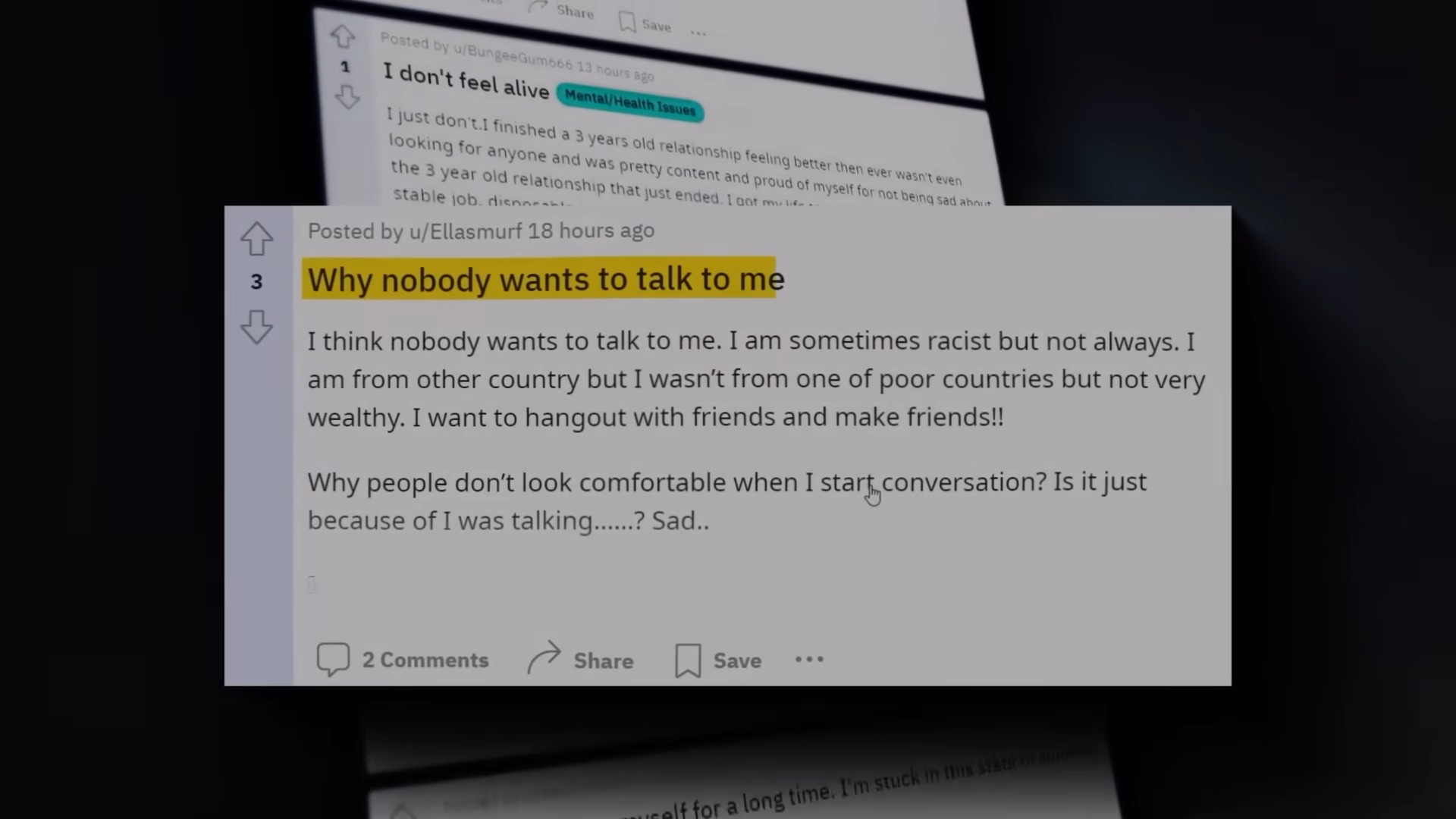
In the second step, we interpret these reactions and attribute them to judgments about our actions. We morph these judgments into an understanding of societal expectations and norms.
The final step involves shaping our self-image by how we believe we are perceived by others. Our self-image is molded by our interpretation of these perceived judgments, thereby shaping our behavior, thoughts, and ultimately, identity.
In the context of Arthur Fleck, these three steps played out harshly. He perceived the reactions of societal indifference and hostility towards him, interpreted them as judgments of unworthiness, and formed a self-image of an outsider, a misfit. This distorted self-perception, a byproduct of the societal neglect Arthur experienced, ultimately precipitated his transformation into the Joker.
The Looking Glass Self: A Distorted Reflection
Charles Cooley, the sociologist who first coined the term “Looking Glass Self,” posited that this social process is what makes us human. According to Cooley, our self-perception is a complex interplay of interactions and interpretations. It is a perpetual feedback loop – we present ourselves to others, perceive their reactions, interpret their judgment, and adjust our self-image accordingly. However, the film “Joker” subverts this concept, casting a critical light on the potential for distortion within the Looking Glass Self.

In Arthur’s case, his self-image is marred by the cruel indifference of society. He is caught in a detrimental feedback loop – every negative encounter with society reinforces his belief in his worthlessness. This is a stark deviation from Cooley’s concept, which assumes a balanced and neutral external evaluation. Here, Arthur’s Looking Glass Self is not an objective reflection of his actions or behavior, but rather a mirror grossly distorted by the harsh judgment and apathy of others.
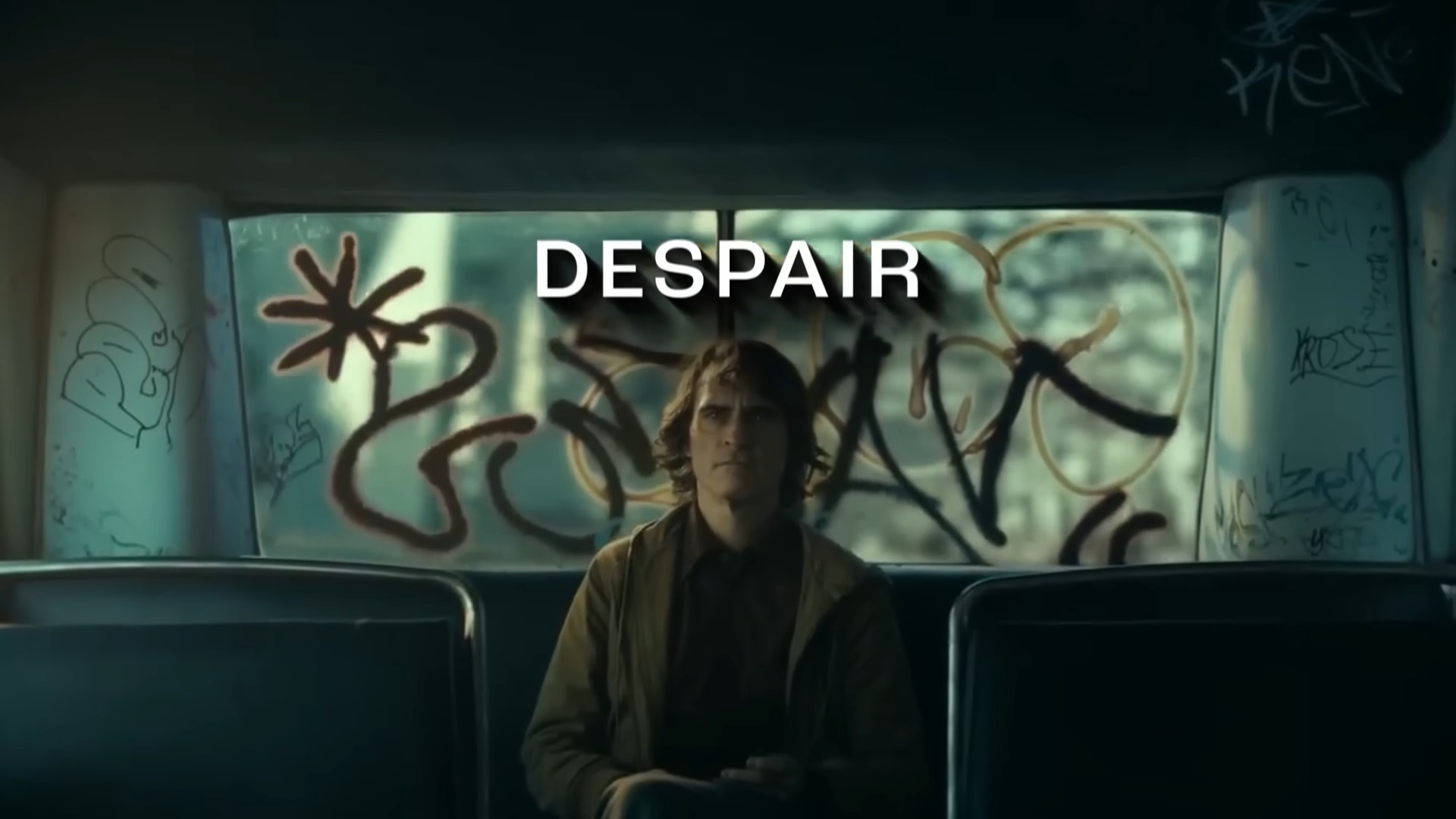
The negative reinforcement Arthur continuously receives only strengthens his self-deprecating belief. Every time Arthur is treated poorly, he internalizes it, mistakenly believing that he deserves such treatment. This conviction fuels his negative self-image and compounds self-loathing, creating a cycle of self-hate that continuously feeds on itself.
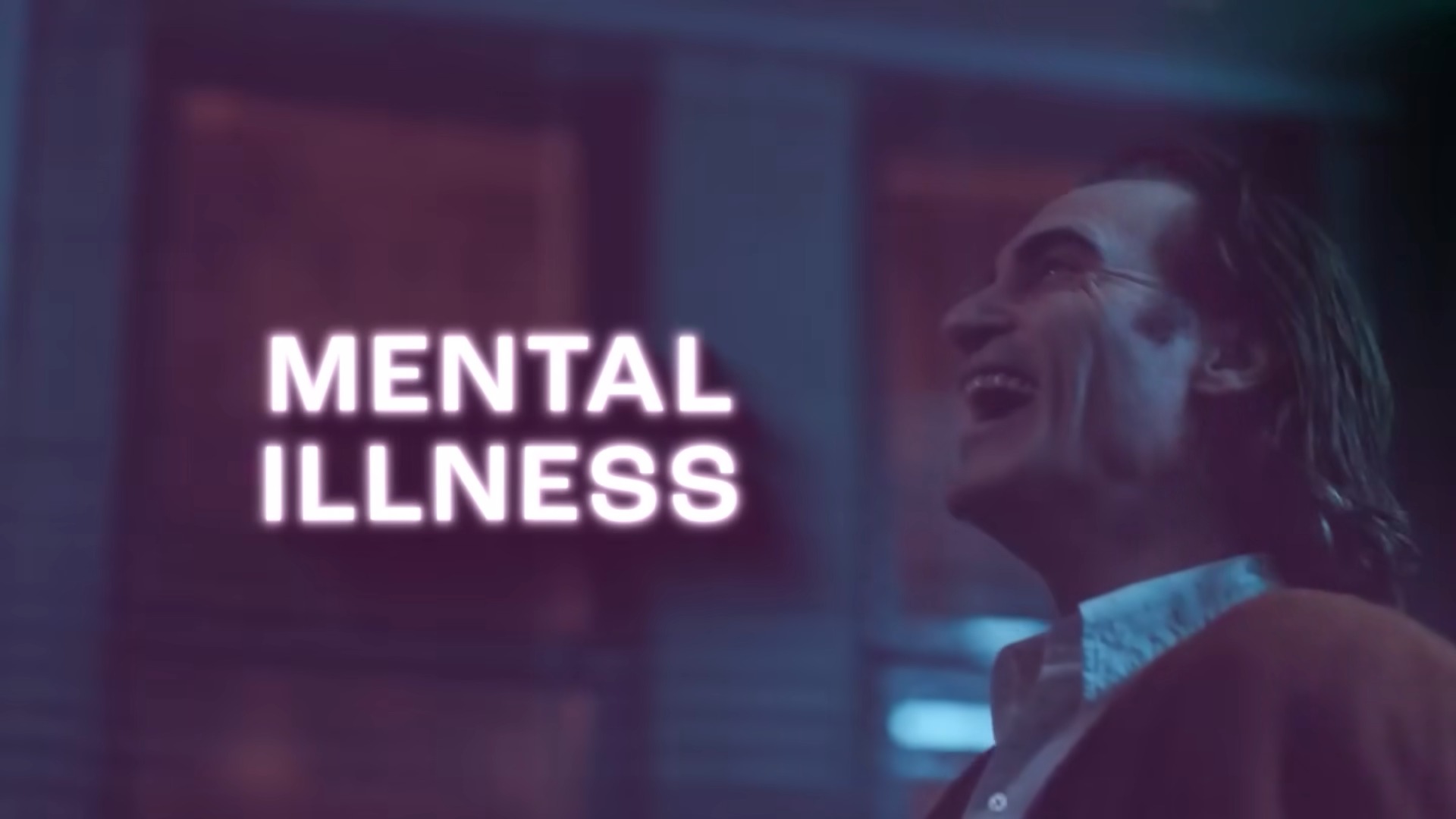
The movie “Joker,” through the tragedy of Arthur, illustrates the dark side of the Looking Glass Self – a warning of what can occur when society’s mirror reflects nothing but disdain and neglect. Arthur’s transformation into the Joker is a testament to the power of societal perception in shaping individual identity, highlighting the potential dangers of a distorted Looking Glass Self.
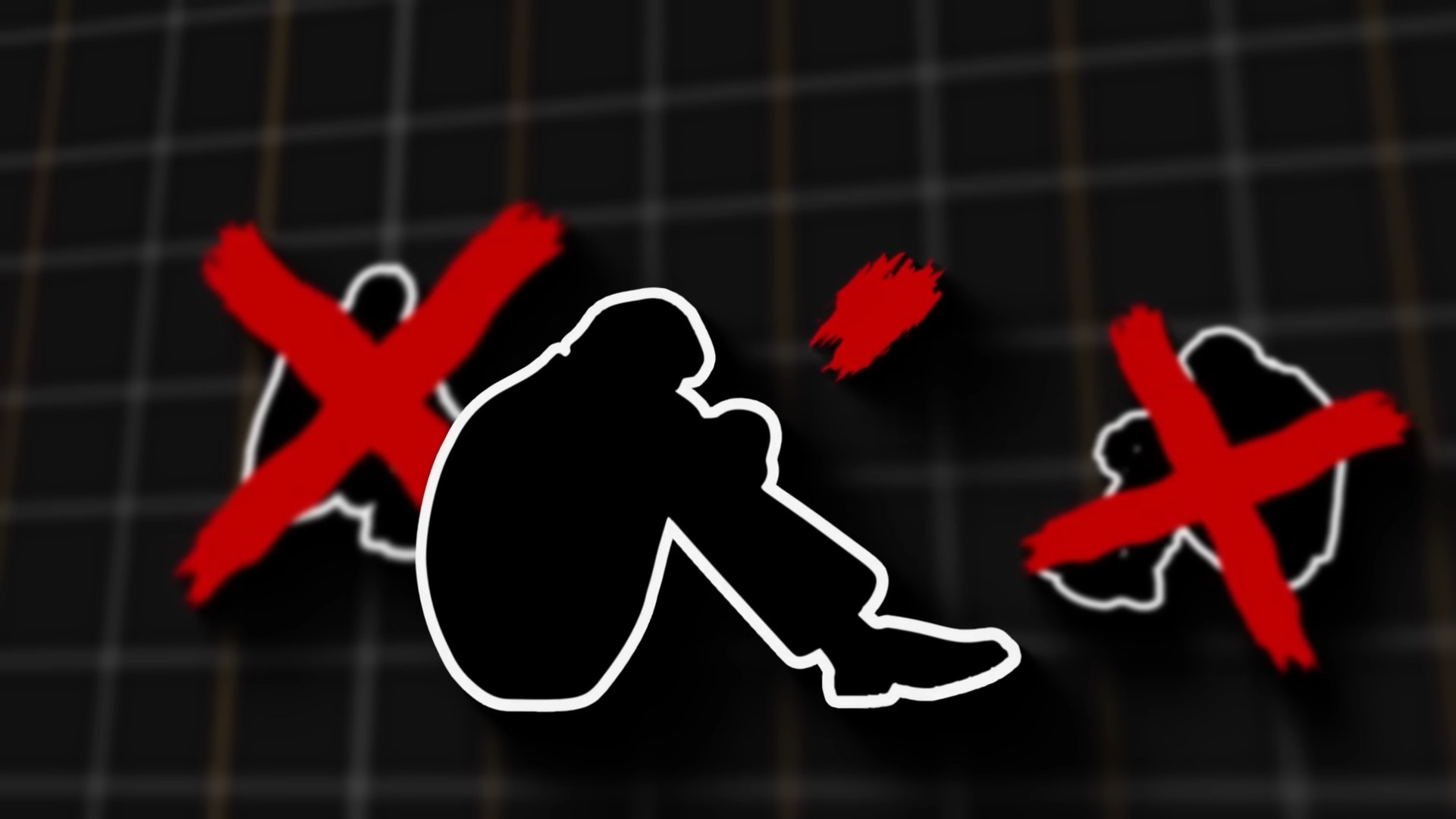
The character of Joker strikes a resonant chord with millions of individuals who identify with Arthur’s narrative of societal isolation and neglect. Our contemporary culture, with its emphasis on individualism, celebrity worship, and nihilistic tendencies, has inadvertently created fertile ground for loneliness and mental health issues to thrive.
Men like Arthur are not anomalies but symptoms of a deep-seated societal problem; they are the castaways of a society that often unwittingly, yet decisively, pushes them toward feelings of worthlessness, anger, and estrangement. In a world that constantly signals their insignificance, these individuals are driven to believe that they are aberrations deserving of nothing but contempt. Such a societal dynamic is not only profoundly tragic but also alarmingly dangerous, as it breeds a sense of despair and rage that can potentially trigger catastrophic outcomes, as evidenced by Arthur’s transformation into the Joker.
The scene where Arthur confides in his therapist serves as a poignant illustration of his escalating desperation. He questions, “Is it just me, or is it getting crazier out there?” But his plea for understanding is met with nothing more than professional detachment. His therapist, his supposed beacon of hope, offers no comfort or reassurance. Instead, she mirrors the cold indifference of the society that surrounds him. Arthur seeks an increase in his medication dosage, a desperate attempt to numb the ever-intensifying pain, but even this request falls on deaf ears. His statement, “All I have, are negative thoughts,” is an explicit cry for help, a desperate plea to be seen, to be understood. Yet, in the deafening silence that follows, Arthur finds no solace, only the cold echo of his despair. This scene underscores the tragic reality of his situation. He yearns for relief from his torment but ultimately finds no respite, not even within the confines of a therapist’s office.
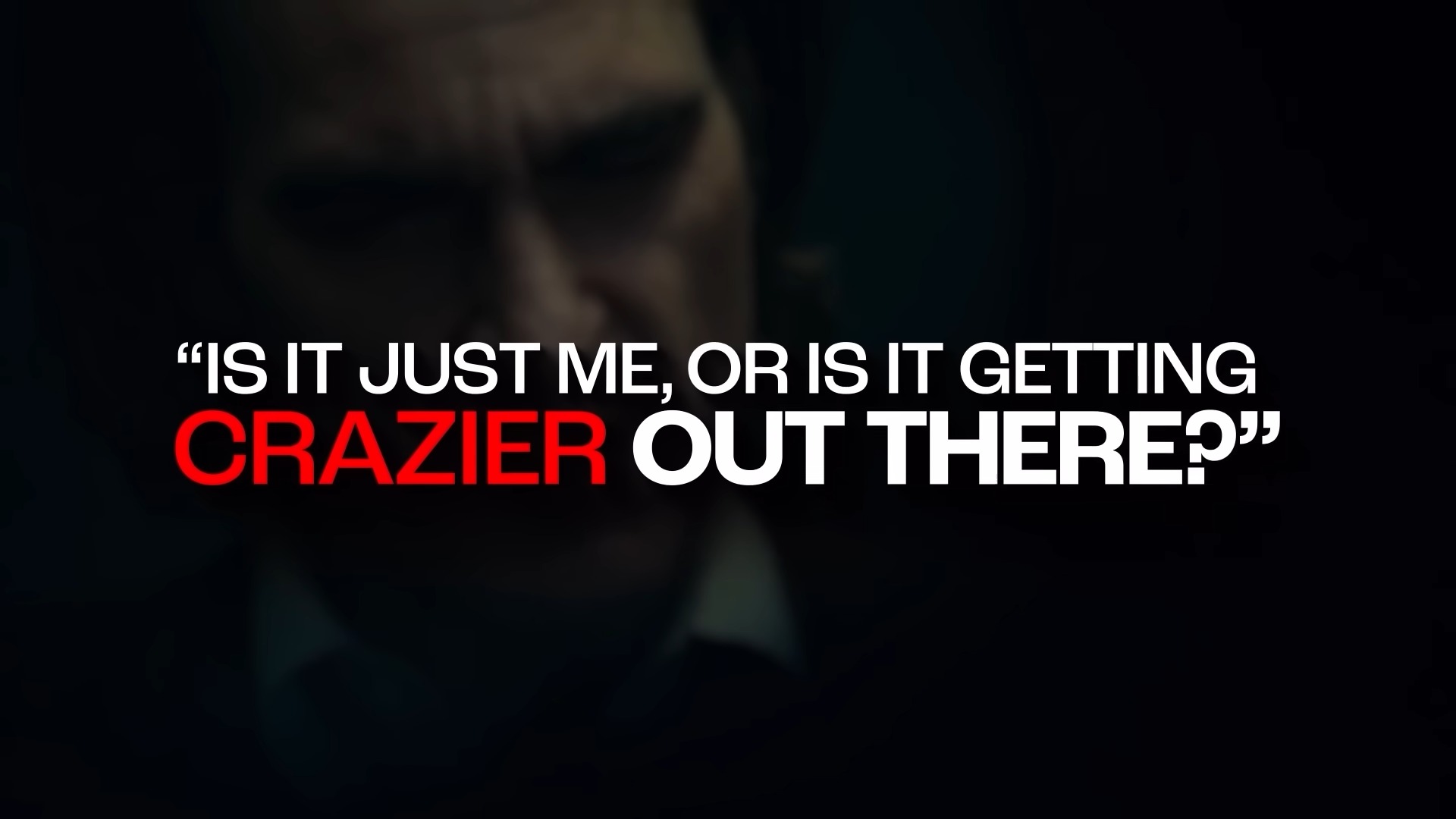
In Arthur Fleck’s world, even the most mundane routines are uphill battles, symbolized by the long flight of stairs he must ascend to reach his apartment. Inside, he cares for his ailing mother, a woman both physically immobile and mentally impaired, leaving Arthur alone to shoulder the burden of her care. Their evenings are punctuated by shared meals in front of the television, tuned invariably to their favorite show, ‘Live with Murray Franklin.’ Murray, the charismatic host, is an object of Arthur’s unabashed admiration. He holds onto this fantasy so fervently that he imagines himself amidst Murray’s live audience. In his illusion, Arthur envisions standing amongst the crowd, his voice echoing through the studio as he narrates his struggles of caring for his sick mother. A wave of uncomfortable laughter sweeps the audience, quickly quelled by Murray’s empathetic demeanor. Murray shares his background, about a time when he was just another face in the crowd, living with his mother after his father abandoned them. He says, “I’m not kiddin’. It was just me and her.” This imagined moment of connection with Murray provides a fleeting respite for Arthur, a glimmer of hope in an otherwise bleak existence.
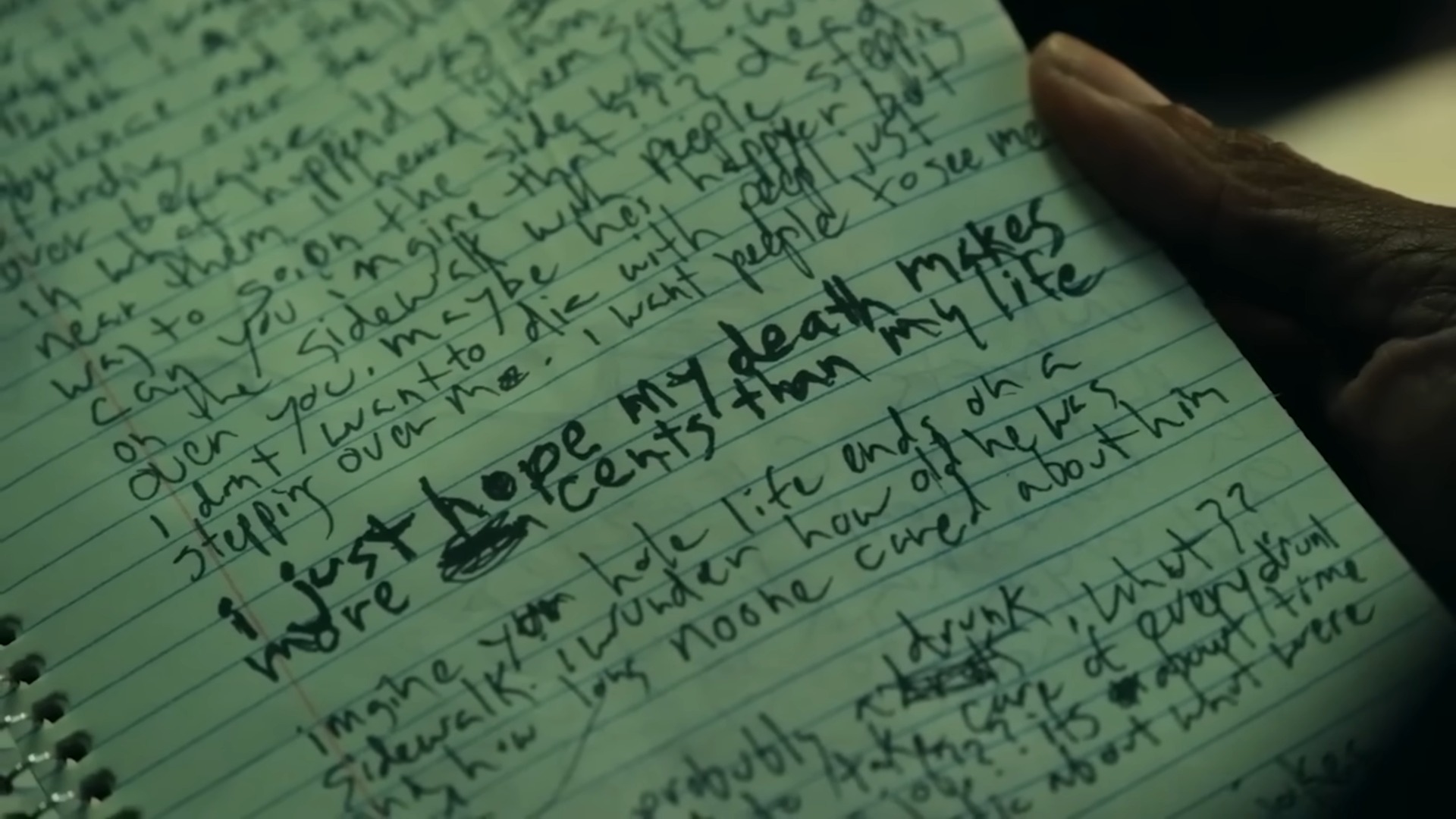
Arthur’s relationship with Murray Franklin, despite being a product of his fantasies, is pivotal to his psyche. Murray serves as a surrogate father figure to Arthur, offering him a sense of acceptance and understanding that he desperately craves. In Arthur’s fantasy, Murray publicly acknowledges their shared experiences, inviting Arthur on stage for a warm and reassuring embrace. This illusionary bond with Murray momentarily assuages Arthur’s feelings of isolation, offering him a glimpse into a world where he is seen, heard, and understood.
The following day, Arthur returns to his daily grind, his transient moment of imaginary acceptance now a distant memory. He shares a conversation with his co-worker, Randall, recounting the incident where a group of teenagers assaulted him.
In response, Randall presents Arthur with a gun, claiming it’s for his protection. Despite his initial hesitation, Arthur succumbs to Randall’s insistence and accepts the weapon. Yet, even as he prepares to leave, his brief respite is abruptly shattered. His boss summons him, issuing a cold reprimand for losing the company’s sign the previous day. He warns Arthur that the cost of the missing sign will be deducted from his paycheck if not returned, further underscoring the harsh realities of Arthur’s fragile existence.
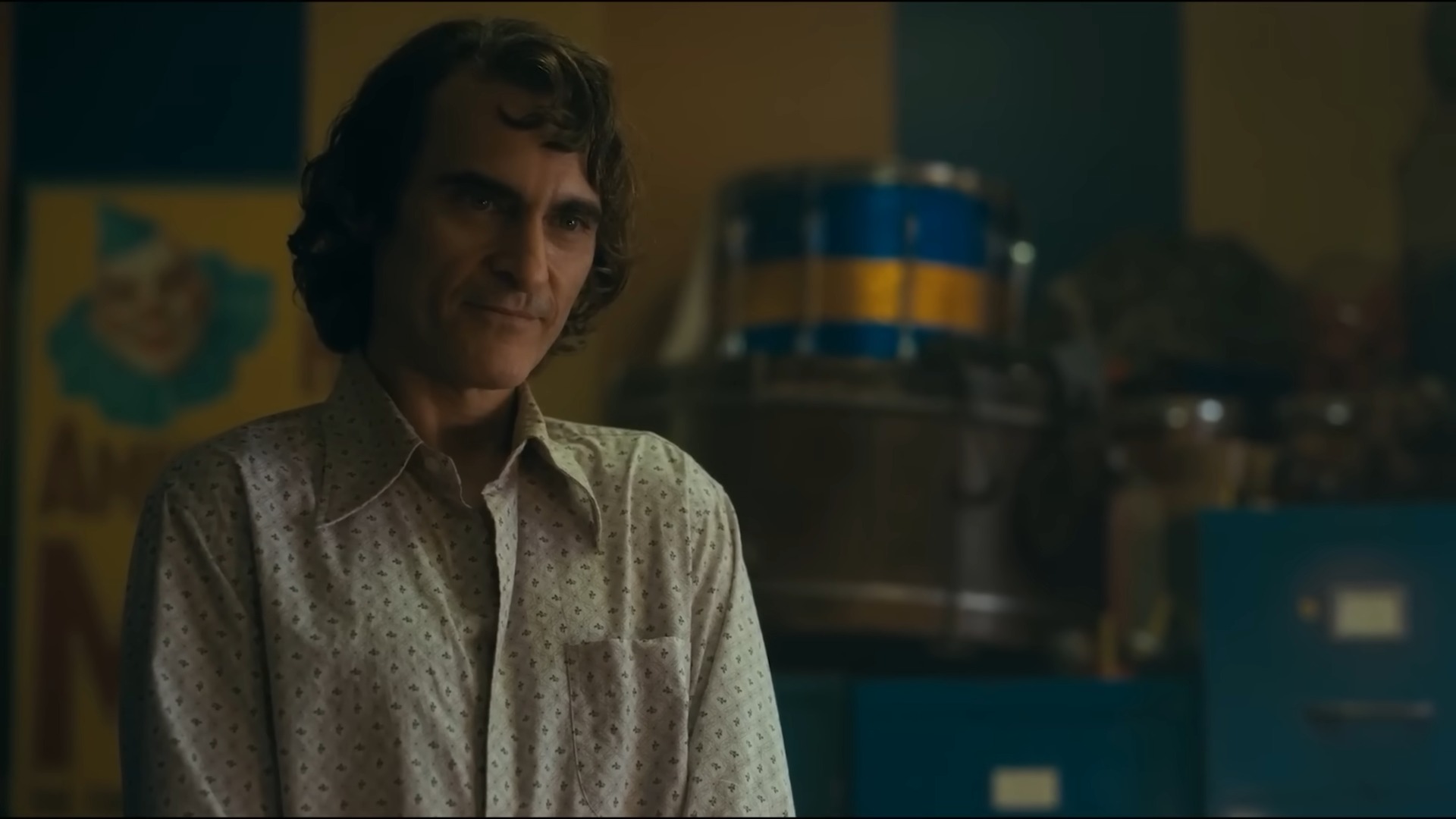
Arthur’s life is a poignant portrayal of abject despair and disillusionment. His work as a clown-for-hire provides no sense of fulfillment or purpose but merely serves as a grim reminder of his societal insignificance. The isolation he endures extends beyond his personal life into his professional one, leaving him devoid of any genuine connection or camaraderie with his colleagues. His existence is permeated with a deep-seated nihilism, a bleak resignation to the fact that his life may never hold any meaningful value. Stripped of hope, bereft of joy, and starved of human connection, Arthur is a man teetering on the precipice of oblivion, washed in an all-consuming sense of nihilism. The world around him, both personally and professionally, is a relentless torrent of indifference that stokes his existential anguish, leaving him adrift in a sea of desolation with no land in sight. His life, thus far, is a stark testament to the devastating effects of societal neglect and isolation.
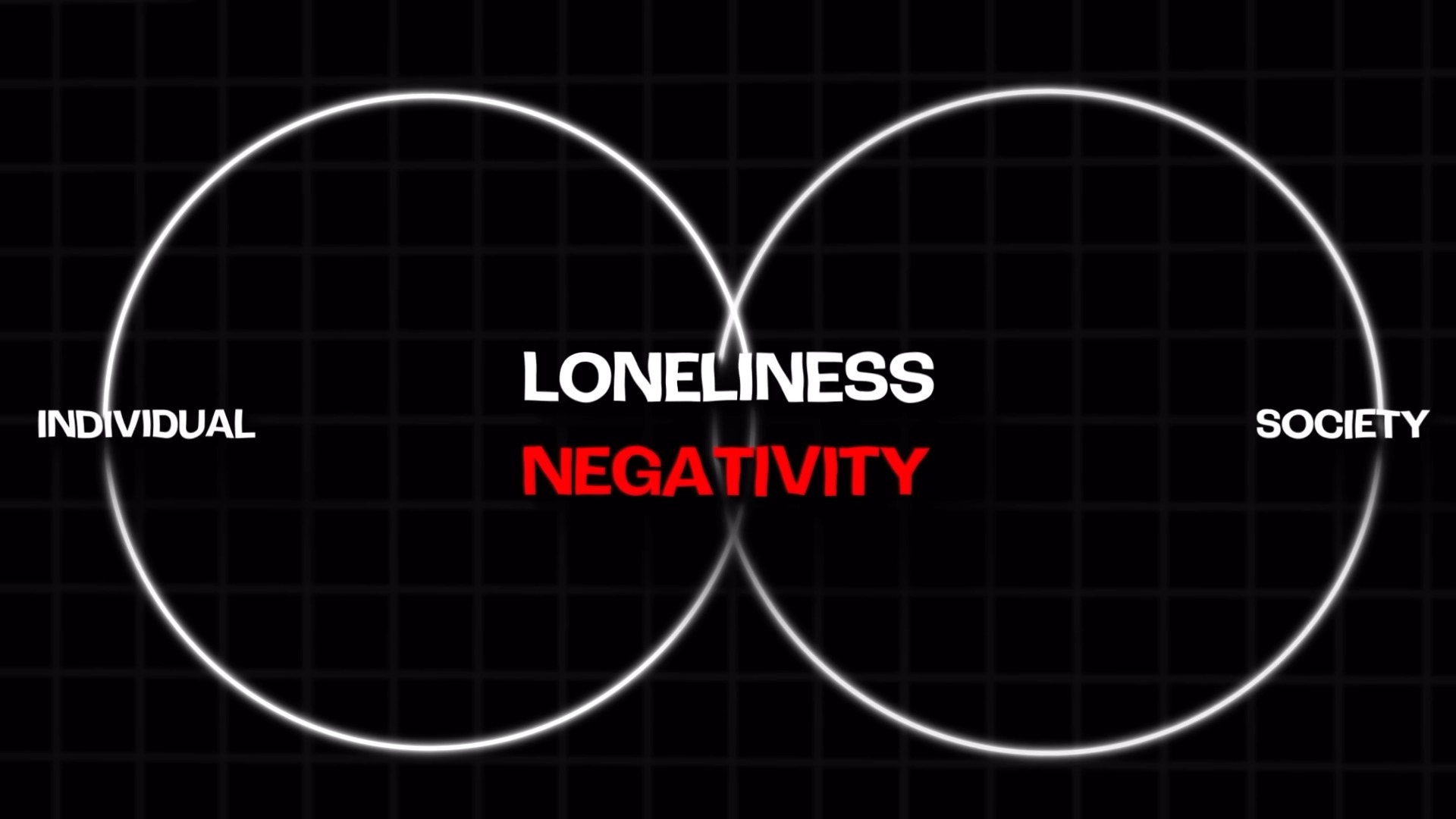
Stage 2 of Societal Revolution: Resentment
As Arthur’s narrative unfolds, we witness the emergence of the second stage of societal revolution: Resentment. Arthur’s character symbolizes the collective struggles of countless isolated individuals who have been shunned and trampled upon by society. Each instance of disregard propels them further into the abyss of resentment, invoking a deep-seated animosity towards the society that has forsaken them. This burgeoning resentment, while concealed beneath layers of forced compliance and feigned indifference, is palpable in Arthur’s character. The dehumanization he endures chips away at his ‘looking-glass self’. Every incident of degradation erodes his self-worth, further intensifying his inner turmoil and resentment. The societal indifference that once threatened to drown Arthur now fuels the simmering revolt within him, setting the stage for an impending societal revolution.
The Consequences of Neglect: Loneliness and Resentment
When society neglects and isolates individuals like Arthur, it fosters a profound sense of loneliness and negativity. This emotional void, in turn, fuels resentment—a natural response to the consistent lack of meaningful communication and understanding. Arthur, like millions of others, finds himself ignored and abandoned by society. The channels of communication that should serve to bridge this gap have crumbled, leaving Arthur and those like him with no outlet for their feelings of abandonment and disillusionment.
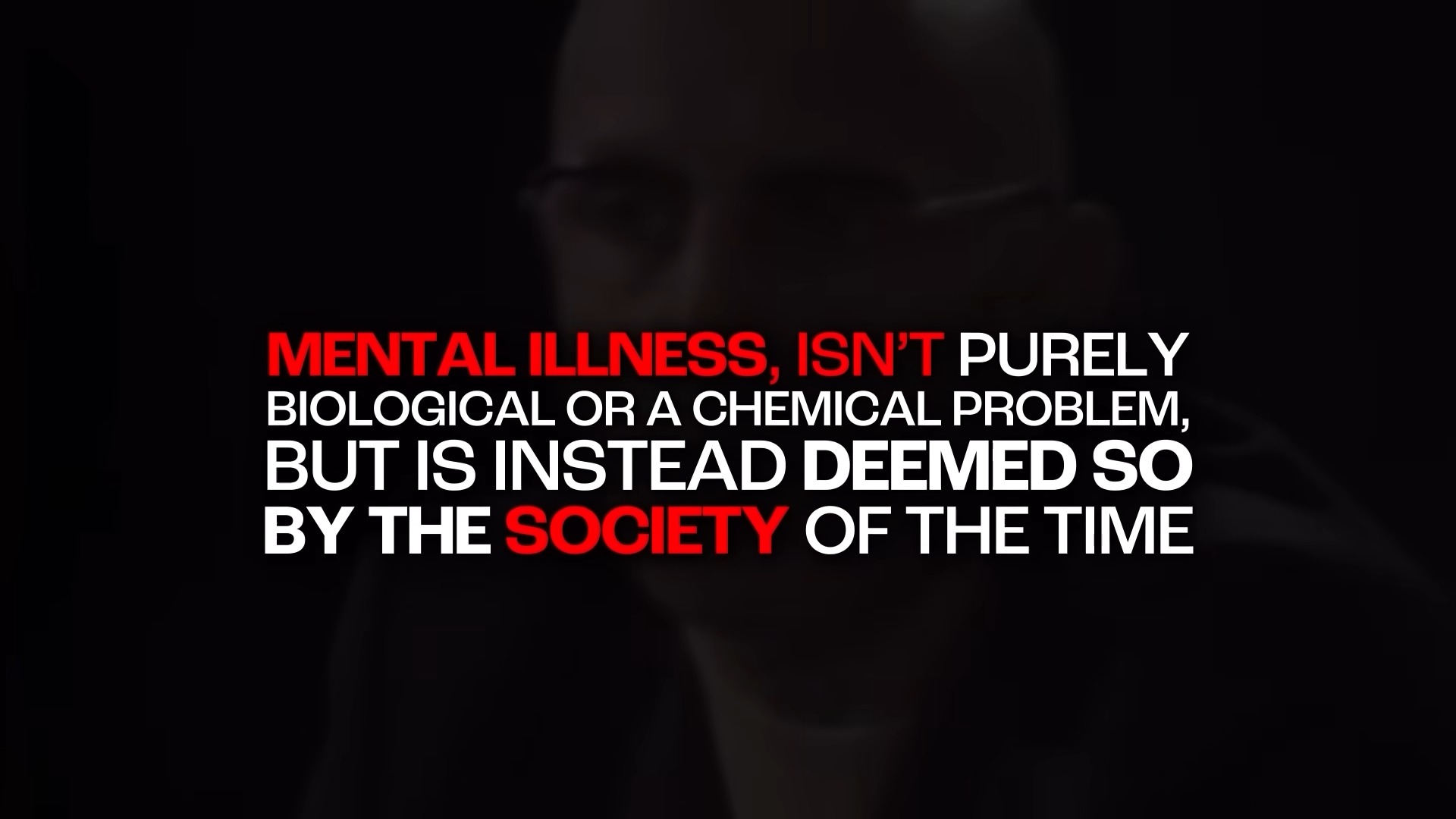
In Michel Foucault’s influential work, “Madness and Civilization,” he posits a perspective that mirrors this discussion. Foucault suggests that madness or mental illness is not merely a biological or chemical problem, but rather a construct shaped by the societal norms of the time. In the era of cancel culture, individuals who diverge from mainstream thought are often labeled as threats to societal order. They’re ostracized, silenced, and cast aside, much like Arthur.
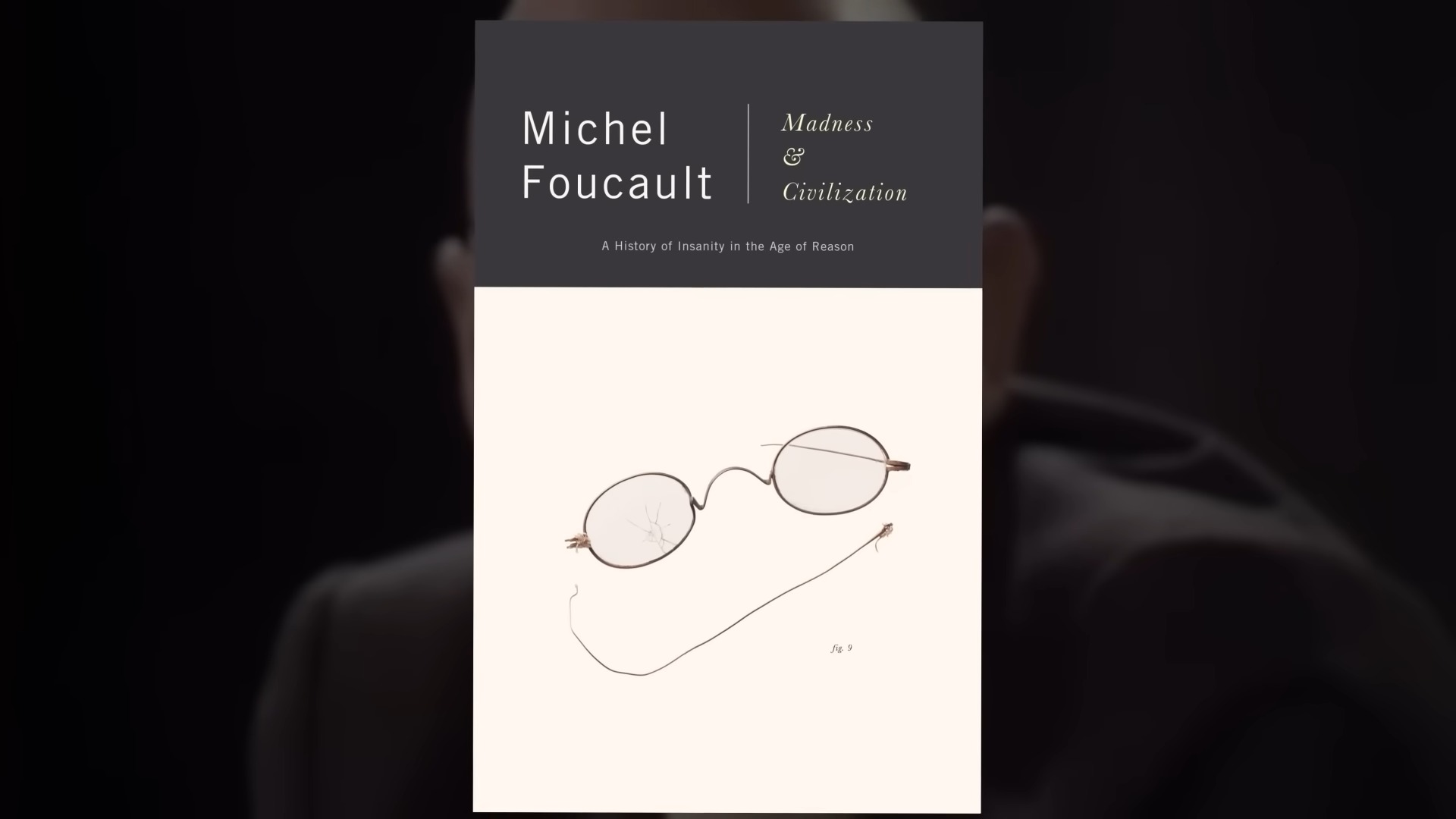
Countless factors contribute to society’s perception and categorization of individuals as mentally ill. Foucault argues that this has resulted in an overly simplistic and homogenized view of madness. By rejecting and isolating those who think differently, society deprives itself of meaningful interactions with these so-called Outsiders. This deep division hinders dialogue and understanding of the problems and disillusionments that plague these marginalized individuals. In the end, societal indifference leads not only to their suffering but also to a collective impoverishment of societal empathy and understanding.
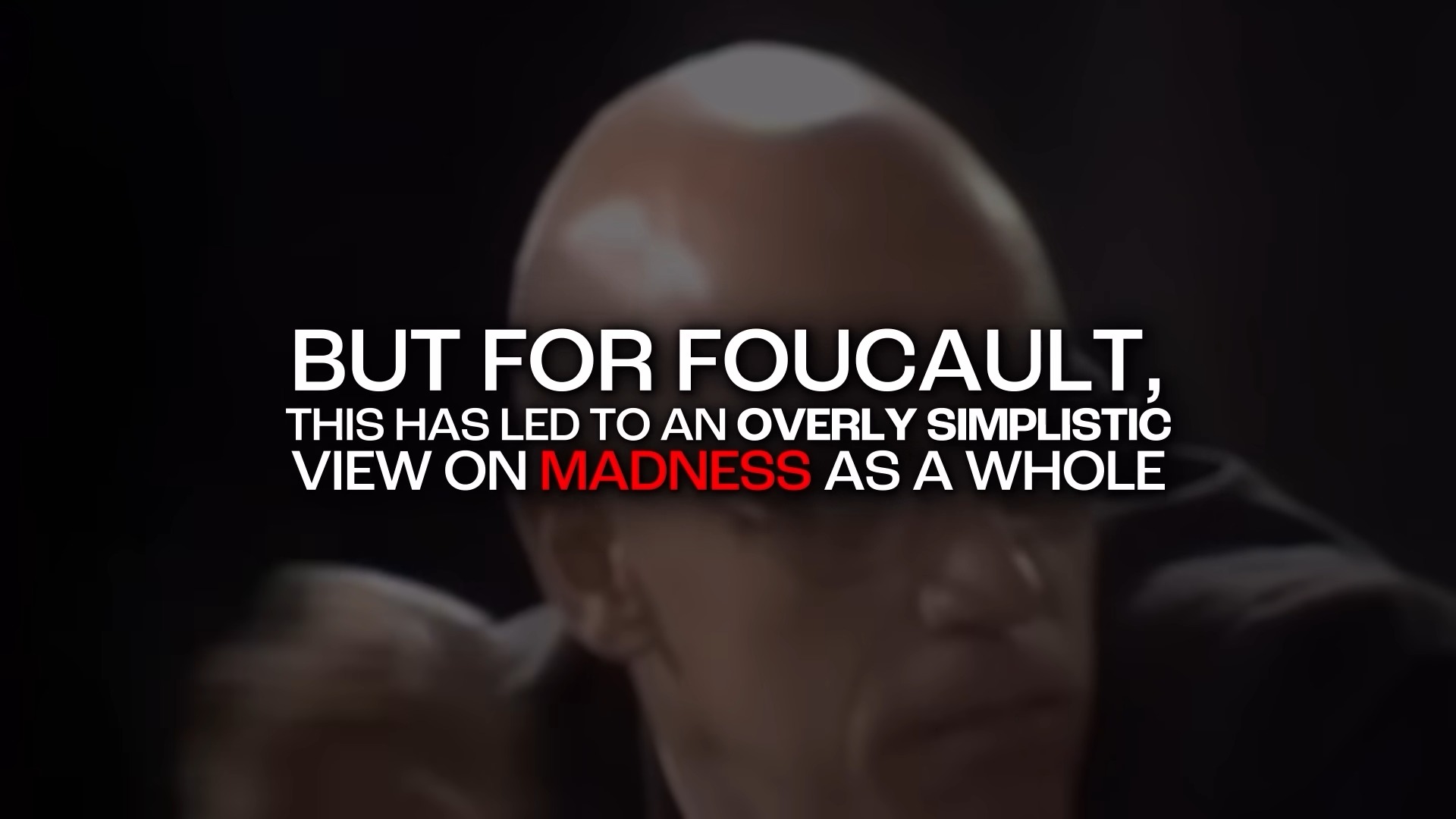
Arthur’s plight is a vivid illustration of societal deficiencies, exposing the raw, brutal consequences of a culture that denigrates and discards those who deviate from its prescribed norms. He embodies the harsh reality of living in the societal margins, a bleak existence characterized by profound loneliness and isolation. The Joker movie, through Arthur’s story, holds an unflinching mirror to this issue, underscoring the societal culpability for the outcomes of such exclusion. A vacuous, synthetic culture that shows blatant hostility towards authenticity and true expression is indeed complicit in the repercussions it faces.
The failure of society to engage in open, meaningful dialogue with its fringe members is evident throughout the movie. Arthur’s interactions with the therapeutic institutions were meant to support him rather than serve to illustrate this disconnect. The sessions appear to be a mere clinical exercise, devoid of any genuine empathy or understanding. His mental health struggles persist, his medications appear ineffective, and his cries for help are met with detached responses.
What Arthur yearns for are the basic human connections that are so integral to our well-being: friendship, love, and community – all of which are systematically decimated by the radical atomization of modern society. The movie portrays the systemic failure to provide him with outlets to express himself or engage in meaningful dialogues – a situation that gradually tears Arthur apart.
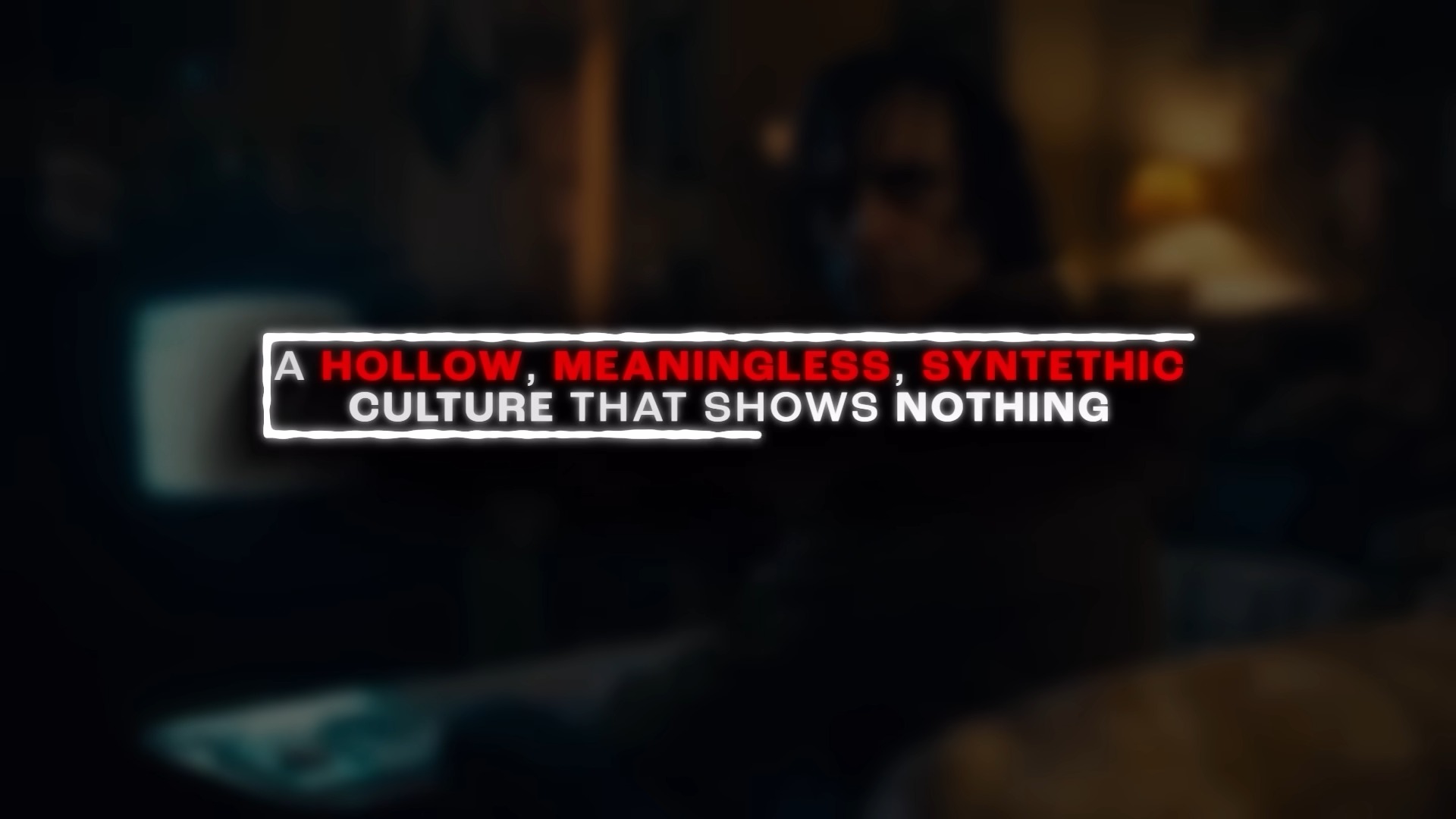
In echoing Foucault’s sentiments, those residing on the societal periphery are no longer engaged in dialogues. The result is not just increased suffering for these individuals, but a collective impoverishment of societal empathy and understanding. The continued neglect of this demographic can only perpetuate the cycle of isolation, resentment, and social upheaval.
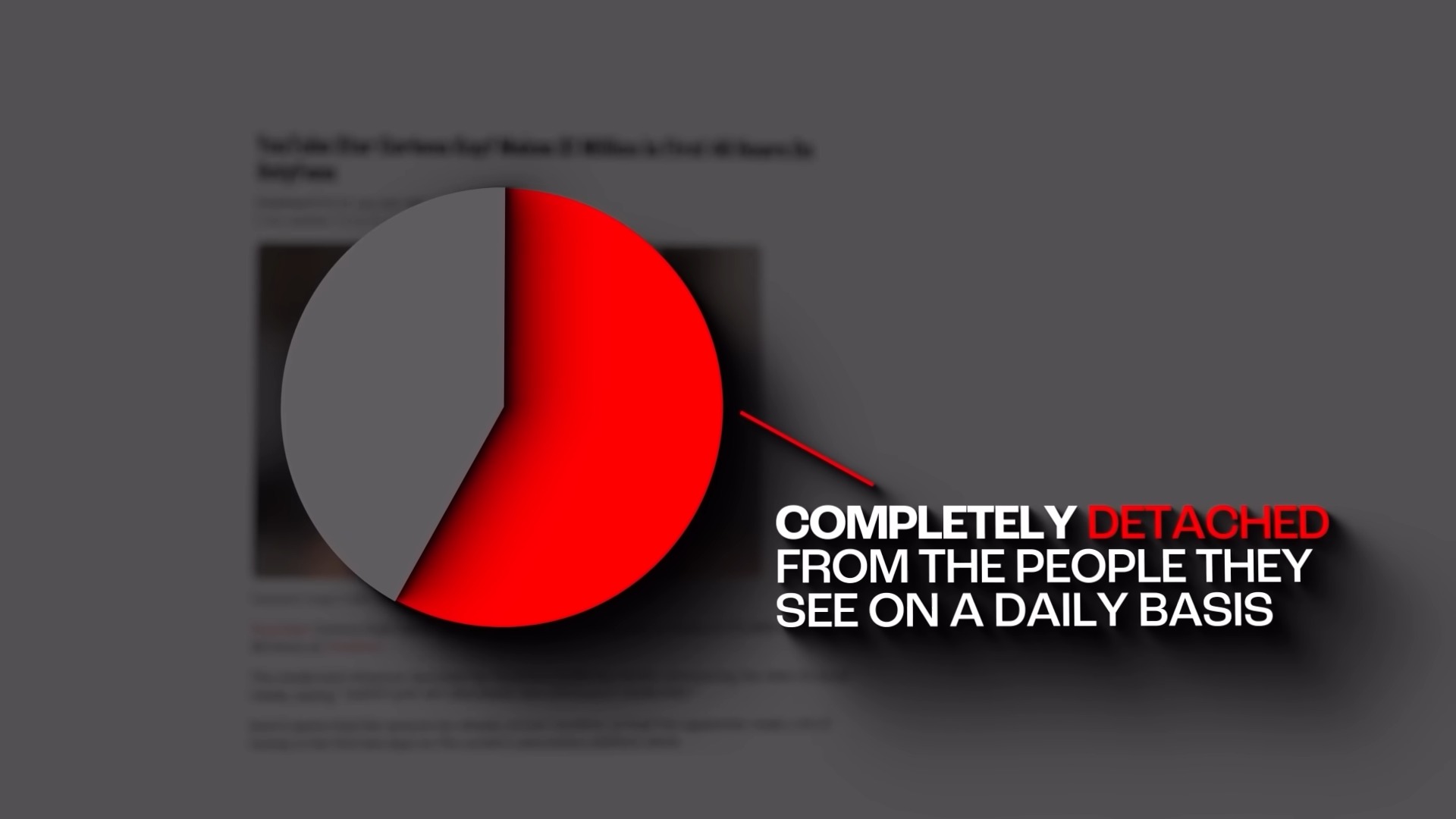
3rd Stage: No Social Relations
As Arthur’s character undergoes a profound evolution, we delve into the third stage of a societal revolution: the stage of No Social Relations. In this transformative phase, individuals experience a complete detachment from society and its norms, transcending mere indifference. It is a state of mind where one no longer feels any allegiance toward societal expectations, leading to a sense of isolation and disconnection.
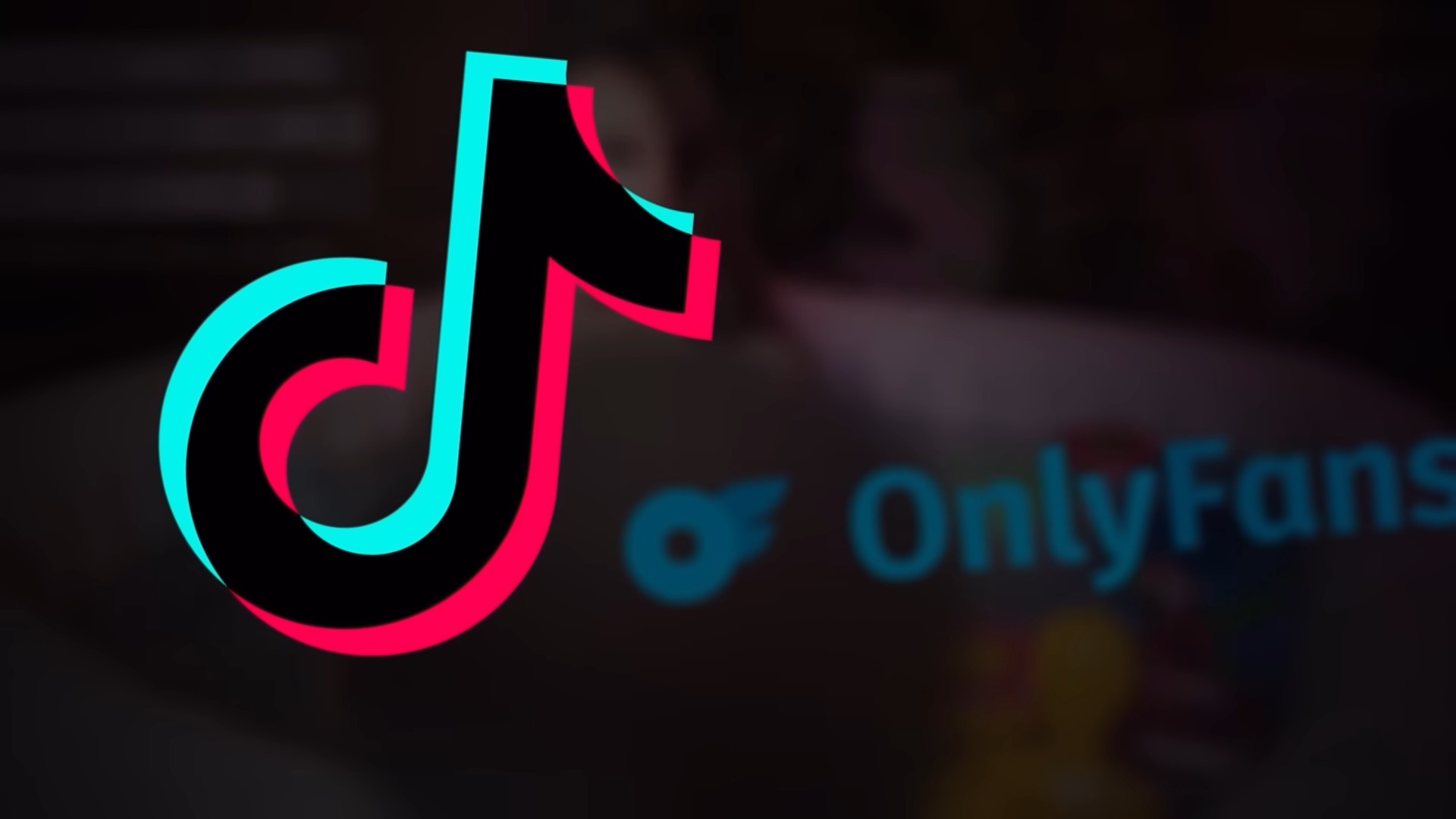
In this nihilistic stage, the individual becomes consumed by their inner turmoil and harbors deep resentment towards society. This internal conflict manifests in their actions, which defy conventional societal norms. Arthur’s transformation into the Joker serves as the embodiment of this stage, as he wholeheartedly embraces chaos and anarchy as a means to rebel against a society that has not only neglected but also abandoned him.

The Joker no longer seeks validation or acceptance from society; instead, he actively works to dismantle it. His actions serve as a stark warning, illustrating the consequences of unchecked societal neglect and isolation. The Joker’s rebellion stands as a testament to the power of one’s inner turmoil and the potential for destructive actions when pushed to the brink. It is a call to action, imploring society to address the underlying issues and prevent such devastating outcomes.
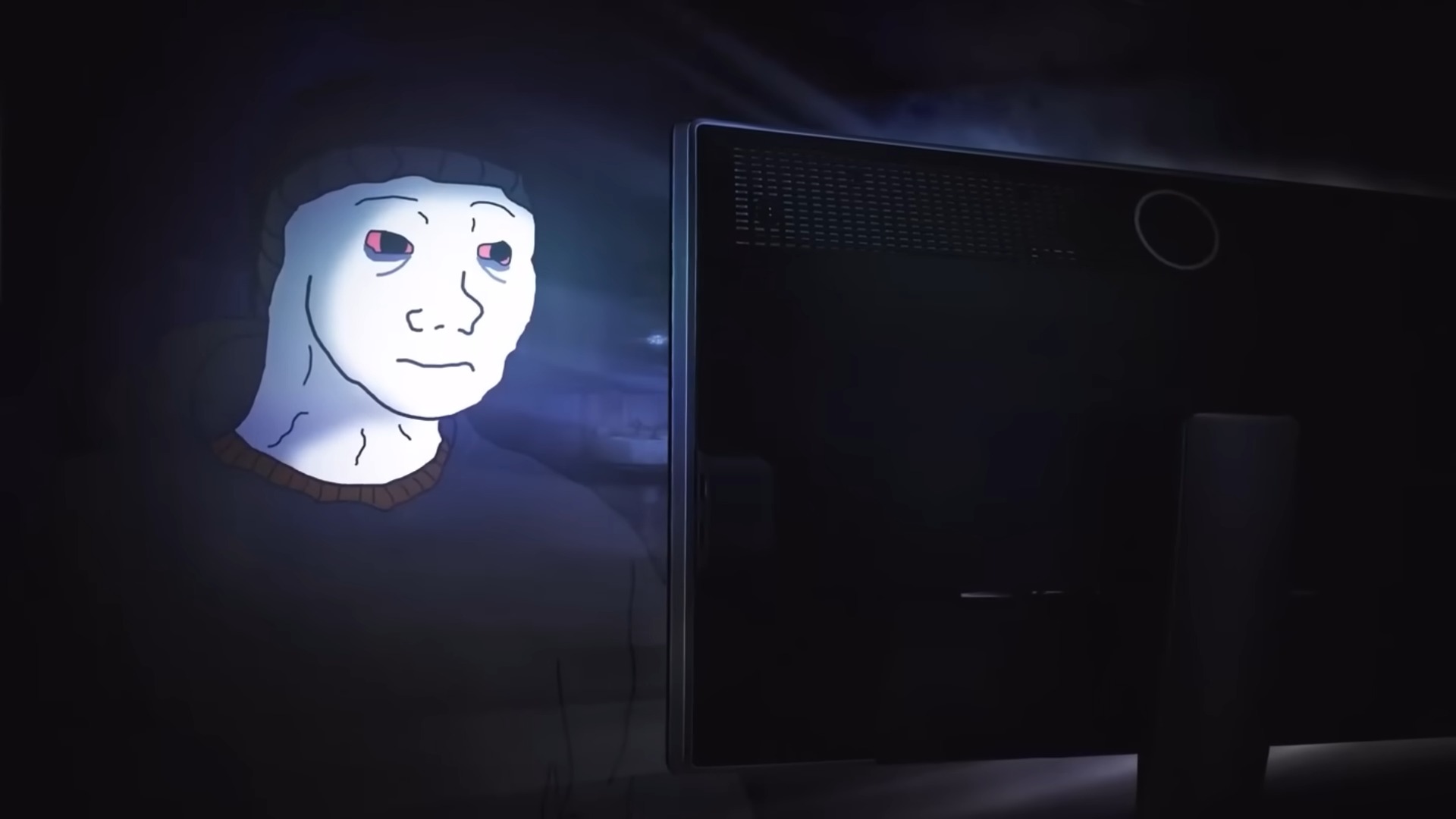
As we witness Arthur’s descent into madness and embrace of anarchy, it becomes clear that his transformation was not inevitable. Society’s neglect and indifference played a pivotal role in pushing him over the edge.
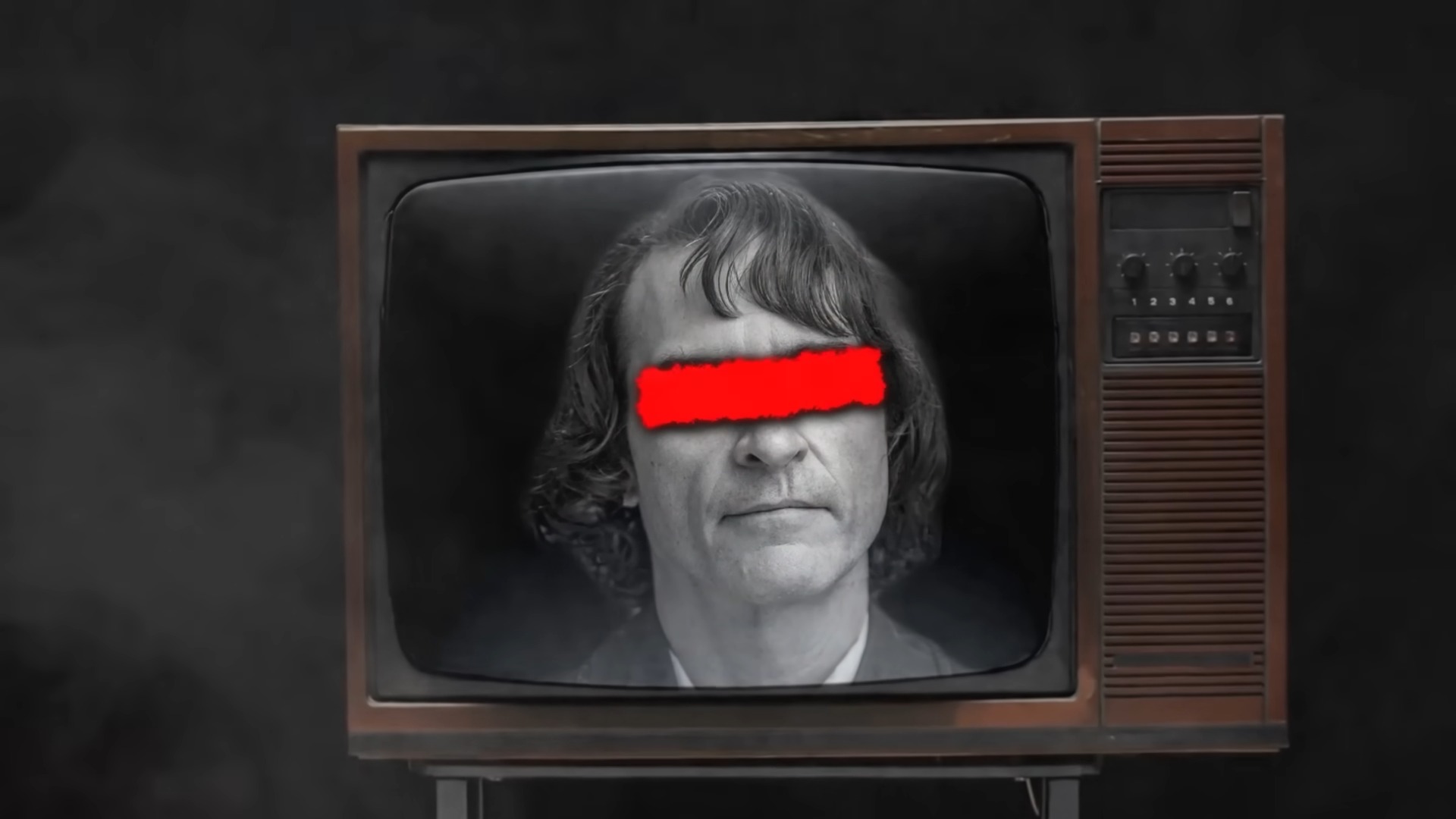
Final Stage of Revolution: Where The Growing Loneliness and Resentment of Society Hits A Breaking Point
The final stage of societal evolution is marked by a boiling point, where growing loneliness and resentment morph into a fervent revolution. New political beliefs permeate the city of Gotham, turning it into a ticking time bomb. The shocking assassination of a key establishment figurehead, Murray, on live television becomes the spark that ignites this volatile mix. To the millions of marginalized, Murray stands as a symbol of the society that has oppressed them. Such an inflammatory incident seems to be the only trigger our present world has so far managed to avoid.
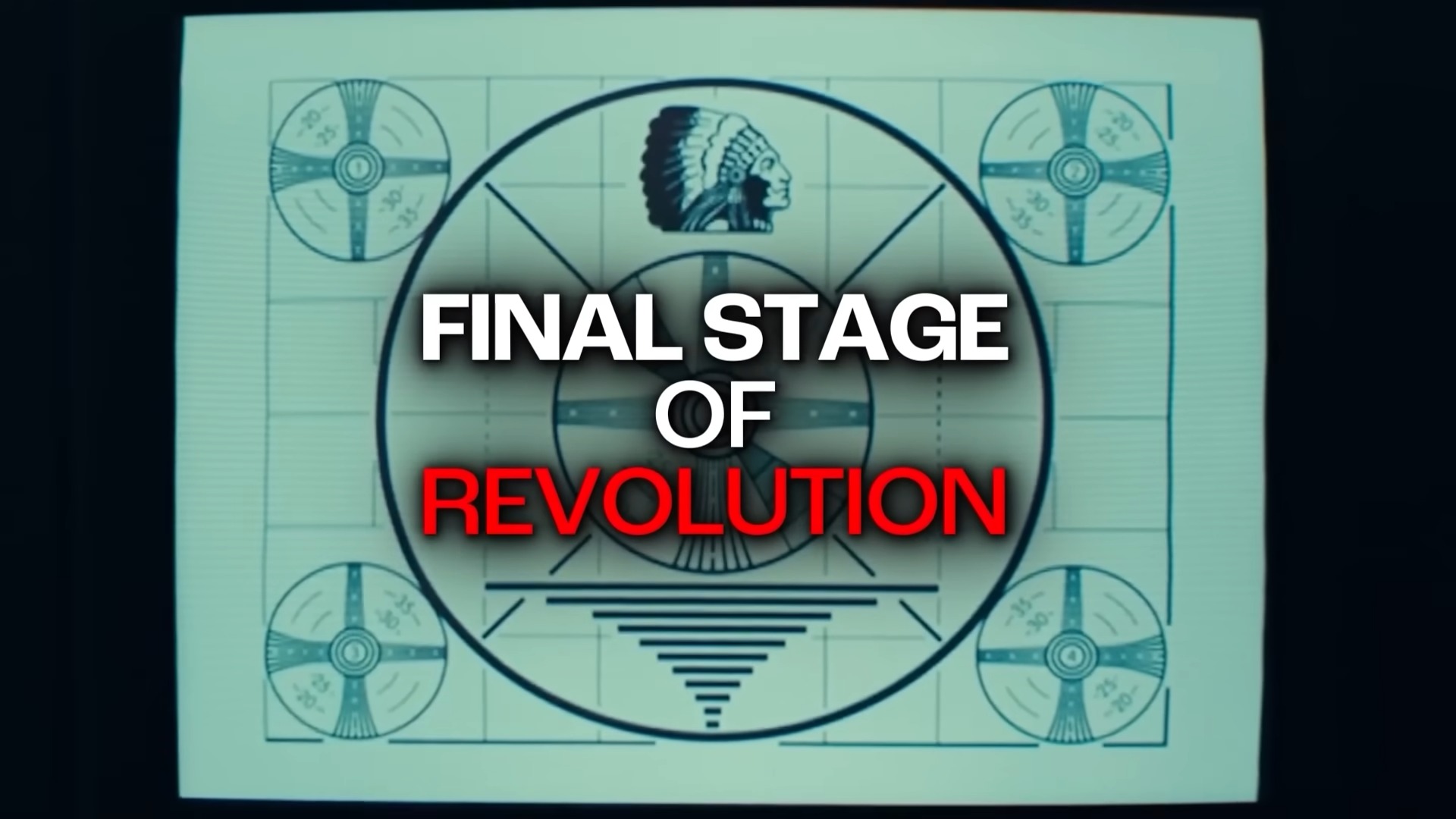
There is a collective hope that societal changes are rolled back before it is too late. In the closing segments of the movie, we witness the disastrous fallout of this uprising. Chaos ensues as riots spread across Gotham. From the backseat of a police cruiser, Arthur beholds the staggering scale of the turmoil he has instigated, a sight that brings a twisted smile to his face. It appears as though Arthur is destined for a lifetime of confinement, yet the upheaval he leaves behind continues to shudder the foundations of Gotham.
In a climactic sequence, a rogue ambulance driven by protesters crashes into the police car carrying Arthur, killing the two policemen. The protesters rescue an unconscious Arthur from the wreckage, gently laying him on the hood of the car. As Arthur awakens and gazes around at the massive crowd that has formed, he undergoes a profound transformation. Arthur is no more; his new identity, belief, and hope for a better world have taken hold. He begins to dance, drawing a bloodied smile across his face, a sight that the crowd embraces as they witness the rise of their savior.
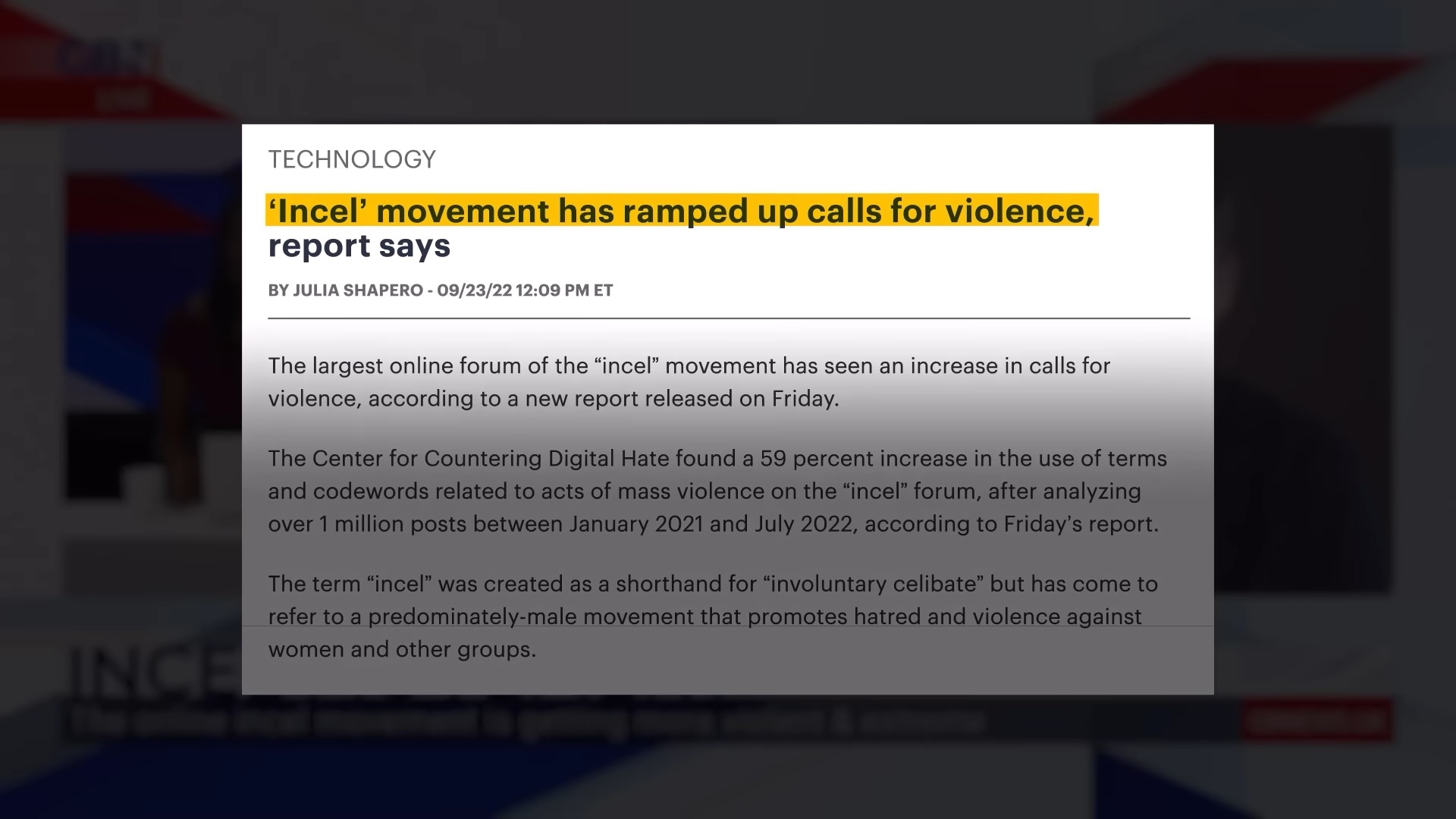
The movie concludes with Arthur, now The Joker, imprisoned in Arkham Asylum. After recounting his story to a psychologist, he breaks into laughter. The psychologist, puzzled, wants to know what’s so funny, but Arthur assures her she won’t understand.
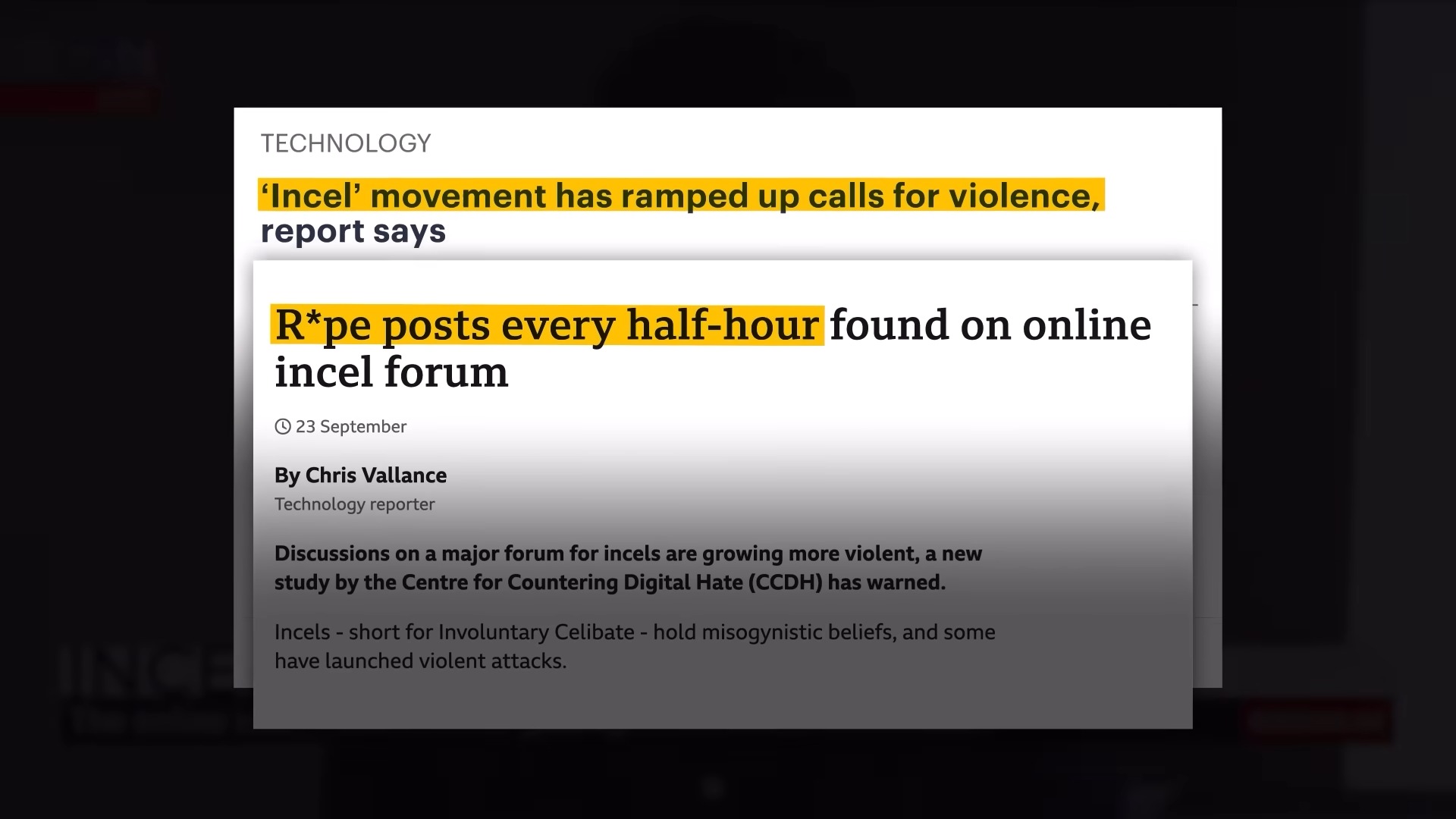
The final scene shows Arthur leaving the room, leaving a trail of bloody footprints, and walking towards a window flooding with light.
Final Thoughts
The Joker’s story is a cautionary tale, highlighting the danger of ignoring societal issues and neglecting those on the fringes. It is a reminder that society is only as strong as its weakest links and that we must work towards creating an inclusive and empathetic community to prevent such tragedies from occurring.
Let The Joker serve as a wake-up call to address the systemic failures in our society before it’s too late.
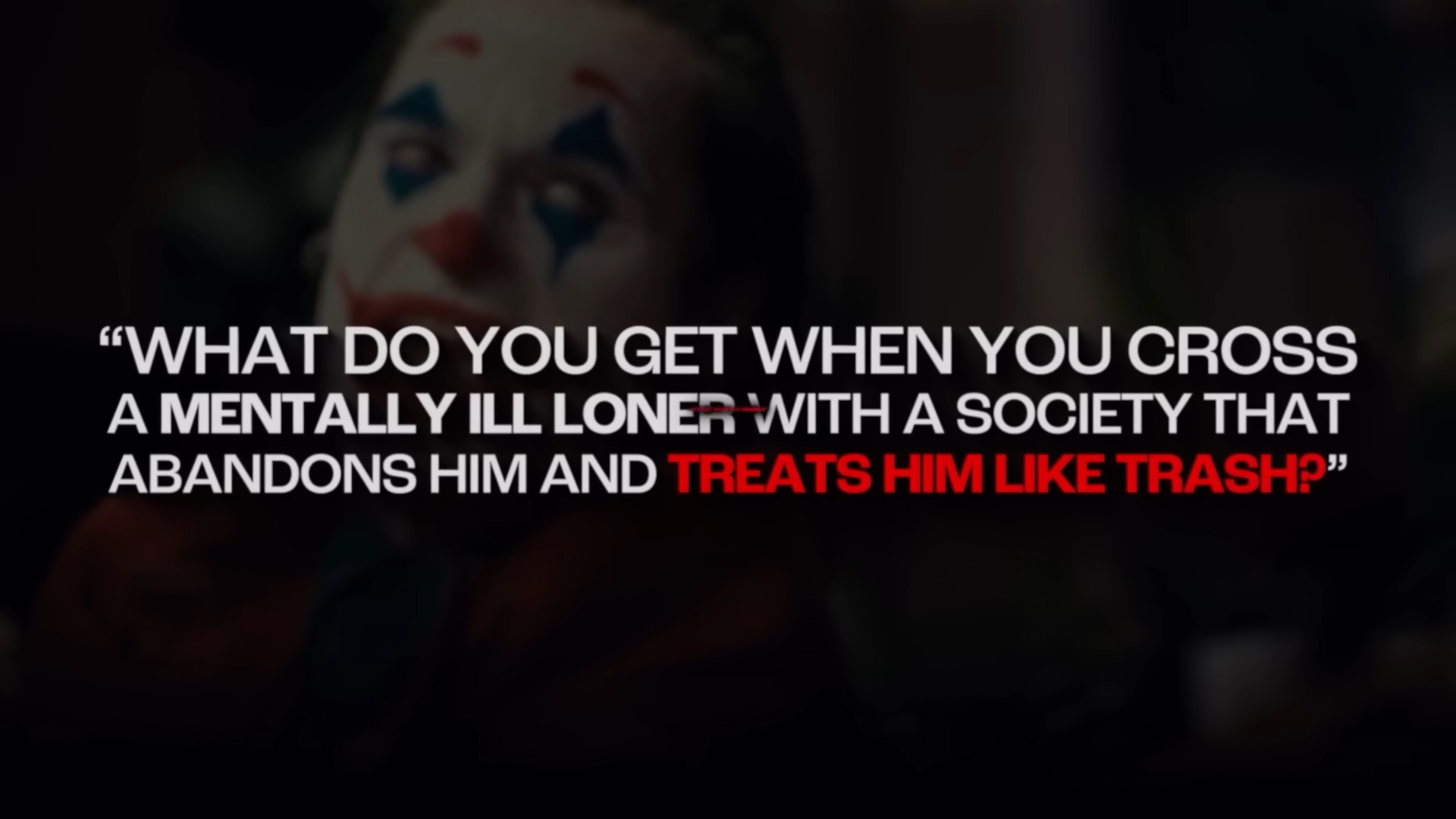

“The Joker,” with its stark depiction of societal decay, is a premonition of the potential collapse of modern Western Society. Today, this warning rings truer than ever. The movie offers an astute prediction of the genesis of the Revolution in the West; a prediction that, when juxtaposed with recent events, suggests that we are teetering on the edge of this precipice.
By studying the narrative of “The Joker,” we can identify four distinct stages that foreshadow societal collapse and revolution in the West: No Social Cohesion, Resentment, No Social Relations, and finally a breaking point.
The initial stage is marked by societal disconnection, where communities are dismantled, and loneliness becomes a pervasive reality.

Stage 1: No Social Cohesion
As we delve into the first section of the movie, the opening shot of the Joker provides a mirrored reflection of our protagonist, Arthur, akin to peering through a Looking Glass. This reflection reveals a man steeped in sadness and vulnerability, forced to don a public mask to assimilate into the society he inhabits. The reason behind Arthur’s need to camouflage himself becomes evident as we witness the grim reality of his existence. Arthur is employed at a company dubbed “Hahas”, where he performs the role of a cheap clown, a fitting metaphor for his circumscribed role in society. Despite the jovial nature associated with his profession, his life is far from the typical cheeriness and exuberance of a circus.

However, instead of basking in the limelight of the circus ring, Arthur is relegated to the fringes, spinning signs on busy streets and taking on other menial tasks. His mundane existence is disrupted one day when, while performing a sign routine, a gang of reckless teenagers snatch his sign and bolt. Without a moment’s hesitation, Arthur gives chase, only to be ambushed and struck with his sign. As he lies helpless on the concrete, the bandits add insult to injury, subjecting him to a brutal beating. This encounter depicts the initial fissures in Gotham’s society, a tangible consequence of the absence of social cohesion. The scene serves as a grim testament to a society where empathy and community have been replaced by opportunism and violence, setting the stage for the impending societal collapse.

The Looking Glass Self is a sociological concept that reflects how our self-perceptions are shaped by our perceptions of how others see us. This notion becomes increasingly significant as we delve deeper into Arthur’s psychology. The harsh reality is that Arthur lives in a society where no one seems to care about him or his well-being. Every interaction, every glance, every word uttered by those around him serves only to reinforce his feelings of insignificance and isolation.
In the bustling metropolis that is Gotham, Arthur’s plight goes unnoticed. Despite the evident cruelty inflicted upon him, passersby offer little more than indifferent glances. No one intervenes, no one offers a helping hand. This lack of empathy and understanding echoes the reality of life in Western mega-cities, where individuals often feel lost in the crowd, their struggles rendered invisible amidst the multitude of faces.
Arthur’s sense of self becomes distorted, molded by the apathy and disregard of those around him. He internalizes these negative experiences, and his self-perception reflects the societal neglect he experiences. This is the essence of the Looking Glass Self, and it serves as a psychological accelerator, hastening Arthur’s descent into the chaotic mindset that will later produce the Joker.
The Formation of the Looking Glass Self: A Three-Step Process
The process of forming the Looking Glass Self is not an overnight transformation; rather, it is a gradual, three-step process that starts early in our lives. As children, we observe and internalize how other people react to our actions and behavior. This is the first step in forming the Looking Glass Self.

In the second step, we interpret these reactions and attribute them to judgments about our actions. We morph these judgments into an understanding of societal expectations and norms.
The final step involves shaping our self-image by how we believe we are perceived by others. Our self-image is molded by our interpretation of these perceived judgments, thereby shaping our behavior, thoughts, and ultimately, identity.
In the context of Arthur Fleck, these three steps played out harshly. He perceived the reactions of societal indifference and hostility towards him, interpreted them as judgments of unworthiness, and formed a self-image of an outsider, a misfit. This distorted self-perception, a byproduct of the societal neglect Arthur experienced, ultimately precipitated his transformation into the Joker.
The Looking Glass Self: A Distorted Reflection
Charles Cooley, the sociologist who first coined the term “Looking Glass Self,” posited that this social process is what makes us human. According to Cooley, our self-perception is a complex interplay of interactions and interpretations. It is a perpetual feedback loop – we present ourselves to others, perceive their reactions, interpret their judgment, and adjust our self-image accordingly. However, the film “Joker” subverts this concept, casting a critical light on the potential for distortion within the Looking Glass Self.

In Arthur’s case, his self-image is marred by the cruel indifference of society. He is caught in a detrimental feedback loop – every negative encounter with society reinforces his belief in his worthlessness. This is a stark deviation from Cooley’s concept, which assumes a balanced and neutral external evaluation. Here, Arthur’s Looking Glass Self is not an objective reflection of his actions or behavior, but rather a mirror grossly distorted by the harsh judgment and apathy of others.

The negative reinforcement Arthur continuously receives only strengthens his self-deprecating belief. Every time Arthur is treated poorly, he internalizes it, mistakenly believing that he deserves such treatment. This conviction fuels his negative self-image and compounds self-loathing, creating a cycle of self-hate that continuously feeds on itself.

The movie “Joker,” through the tragedy of Arthur, illustrates the dark side of the Looking Glass Self – a warning of what can occur when society’s mirror reflects nothing but disdain and neglect. Arthur’s transformation into the Joker is a testament to the power of societal perception in shaping individual identity, highlighting the potential dangers of a distorted Looking Glass Self.

The character of Joker strikes a resonant chord with millions of individuals who identify with Arthur’s narrative of societal isolation and neglect. Our contemporary culture, with its emphasis on individualism, celebrity worship, and nihilistic tendencies, has inadvertently created fertile ground for loneliness and mental health issues to thrive.
Men like Arthur are not anomalies but symptoms of a deep-seated societal problem; they are the castaways of a society that often unwittingly, yet decisively, pushes them toward feelings of worthlessness, anger, and estrangement. In a world that constantly signals their insignificance, these individuals are driven to believe that they are aberrations deserving of nothing but contempt. Such a societal dynamic is not only profoundly tragic but also alarmingly dangerous, as it breeds a sense of despair and rage that can potentially trigger catastrophic outcomes, as evidenced by Arthur’s transformation into the Joker.
The scene where Arthur confides in his therapist serves as a poignant illustration of his escalating desperation. He questions, “Is it just me, or is it getting crazier out there?” But his plea for understanding is met with nothing more than professional detachment. His therapist, his supposed beacon of hope, offers no comfort or reassurance. Instead, she mirrors the cold indifference of the society that surrounds him. Arthur seeks an increase in his medication dosage, a desperate attempt to numb the ever-intensifying pain, but even this request falls on deaf ears. His statement, “All I have, are negative thoughts,” is an explicit cry for help, a desperate plea to be seen, to be understood. Yet, in the deafening silence that follows, Arthur finds no solace, only the cold echo of his despair. This scene underscores the tragic reality of his situation. He yearns for relief from his torment but ultimately finds no respite, not even within the confines of a therapist’s office.

In Arthur Fleck’s world, even the most mundane routines are uphill battles, symbolized by the long flight of stairs he must ascend to reach his apartment. Inside, he cares for his ailing mother, a woman both physically immobile and mentally impaired, leaving Arthur alone to shoulder the burden of her care. Their evenings are punctuated by shared meals in front of the television, tuned invariably to their favorite show, ‘Live with Murray Franklin.’ Murray, the charismatic host, is an object of Arthur’s unabashed admiration. He holds onto this fantasy so fervently that he imagines himself amidst Murray’s live audience. In his illusion, Arthur envisions standing amongst the crowd, his voice echoing through the studio as he narrates his struggles of caring for his sick mother. A wave of uncomfortable laughter sweeps the audience, quickly quelled by Murray’s empathetic demeanor. Murray shares his background, about a time when he was just another face in the crowd, living with his mother after his father abandoned them. He says, “I’m not kiddin’. It was just me and her.” This imagined moment of connection with Murray provides a fleeting respite for Arthur, a glimmer of hope in an otherwise bleak existence.

Arthur’s relationship with Murray Franklin, despite being a product of his fantasies, is pivotal to his psyche. Murray serves as a surrogate father figure to Arthur, offering him a sense of acceptance and understanding that he desperately craves. In Arthur’s fantasy, Murray publicly acknowledges their shared experiences, inviting Arthur on stage for a warm and reassuring embrace. This illusionary bond with Murray momentarily assuages Arthur’s feelings of isolation, offering him a glimpse into a world where he is seen, heard, and understood.
The following day, Arthur returns to his daily grind, his transient moment of imaginary acceptance now a distant memory. He shares a conversation with his co-worker, Randall, recounting the incident where a group of teenagers assaulted him.
In response, Randall presents Arthur with a gun, claiming it’s for his protection. Despite his initial hesitation, Arthur succumbs to Randall’s insistence and accepts the weapon. Yet, even as he prepares to leave, his brief respite is abruptly shattered. His boss summons him, issuing a cold reprimand for losing the company’s sign the previous day. He warns Arthur that the cost of the missing sign will be deducted from his paycheck if not returned, further underscoring the harsh realities of Arthur’s fragile existence.

Arthur’s life is a poignant portrayal of abject despair and disillusionment. His work as a clown-for-hire provides no sense of fulfillment or purpose but merely serves as a grim reminder of his societal insignificance. The isolation he endures extends beyond his personal life into his professional one, leaving him devoid of any genuine connection or camaraderie with his colleagues. His existence is permeated with a deep-seated nihilism, a bleak resignation to the fact that his life may never hold any meaningful value. Stripped of hope, bereft of joy, and starved of human connection, Arthur is a man teetering on the precipice of oblivion, washed in an all-consuming sense of nihilism. The world around him, both personally and professionally, is a relentless torrent of indifference that stokes his existential anguish, leaving him adrift in a sea of desolation with no land in sight. His life, thus far, is a stark testament to the devastating effects of societal neglect and isolation.

Stage 2 of Societal Revolution: Resentment
As Arthur’s narrative unfolds, we witness the emergence of the second stage of societal revolution: Resentment. Arthur’s character symbolizes the collective struggles of countless isolated individuals who have been shunned and trampled upon by society. Each instance of disregard propels them further into the abyss of resentment, invoking a deep-seated animosity towards the society that has forsaken them. This burgeoning resentment, while concealed beneath layers of forced compliance and feigned indifference, is palpable in Arthur’s character. The dehumanization he endures chips away at his ‘looking-glass self’. Every incident of degradation erodes his self-worth, further intensifying his inner turmoil and resentment. The societal indifference that once threatened to drown Arthur now fuels the simmering revolt within him, setting the stage for an impending societal revolution.
The Consequences of Neglect: Loneliness and Resentment
When society neglects and isolates individuals like Arthur, it fosters a profound sense of loneliness and negativity. This emotional void, in turn, fuels resentment—a natural response to the consistent lack of meaningful communication and understanding. Arthur, like millions of others, finds himself ignored and abandoned by society. The channels of communication that should serve to bridge this gap have crumbled, leaving Arthur and those like him with no outlet for their feelings of abandonment and disillusionment.

In Michel Foucault’s influential work, “Madness and Civilization,” he posits a perspective that mirrors this discussion. Foucault suggests that madness or mental illness is not merely a biological or chemical problem, but rather a construct shaped by the societal norms of the time. In the era of cancel culture, individuals who diverge from mainstream thought are often labeled as threats to societal order. They’re ostracized, silenced, and cast aside, much like Arthur.

Countless factors contribute to society’s perception and categorization of individuals as mentally ill. Foucault argues that this has resulted in an overly simplistic and homogenized view of madness. By rejecting and isolating those who think differently, society deprives itself of meaningful interactions with these so-called Outsiders. This deep division hinders dialogue and understanding of the problems and disillusionments that plague these marginalized individuals. In the end, societal indifference leads not only to their suffering but also to a collective impoverishment of societal empathy and understanding.

Arthur’s plight is a vivid illustration of societal deficiencies, exposing the raw, brutal consequences of a culture that denigrates and discards those who deviate from its prescribed norms. He embodies the harsh reality of living in the societal margins, a bleak existence characterized by profound loneliness and isolation. The Joker movie, through Arthur’s story, holds an unflinching mirror to this issue, underscoring the societal culpability for the outcomes of such exclusion. A vacuous, synthetic culture that shows blatant hostility towards authenticity and true expression is indeed complicit in the repercussions it faces.
The failure of society to engage in open, meaningful dialogue with its fringe members is evident throughout the movie. Arthur’s interactions with the therapeutic institutions were meant to support him rather than serve to illustrate this disconnect. The sessions appear to be a mere clinical exercise, devoid of any genuine empathy or understanding. His mental health struggles persist, his medications appear ineffective, and his cries for help are met with detached responses.
What Arthur yearns for are the basic human connections that are so integral to our well-being: friendship, love, and community – all of which are systematically decimated by the radical atomization of modern society. The movie portrays the systemic failure to provide him with outlets to express himself or engage in meaningful dialogues – a situation that gradually tears Arthur apart.

In echoing Foucault’s sentiments, those residing on the societal periphery are no longer engaged in dialogues. The result is not just increased suffering for these individuals, but a collective impoverishment of societal empathy and understanding. The continued neglect of this demographic can only perpetuate the cycle of isolation, resentment, and social upheaval.

3rd Stage: No Social Relations
As Arthur’s character undergoes a profound evolution, we delve into the third stage of a societal revolution: the stage of No Social Relations. In this transformative phase, individuals experience a complete detachment from society and its norms, transcending mere indifference. It is a state of mind where one no longer feels any allegiance toward societal expectations, leading to a sense of isolation and disconnection.

In this nihilistic stage, the individual becomes consumed by their inner turmoil and harbors deep resentment towards society. This internal conflict manifests in their actions, which defy conventional societal norms. Arthur’s transformation into the Joker serves as the embodiment of this stage, as he wholeheartedly embraces chaos and anarchy as a means to rebel against a society that has not only neglected but also abandoned him.

The Joker no longer seeks validation or acceptance from society; instead, he actively works to dismantle it. His actions serve as a stark warning, illustrating the consequences of unchecked societal neglect and isolation. The Joker’s rebellion stands as a testament to the power of one’s inner turmoil and the potential for destructive actions when pushed to the brink. It is a call to action, imploring society to address the underlying issues and prevent such devastating outcomes.

As we witness Arthur’s descent into madness and embrace of anarchy, it becomes clear that his transformation was not inevitable. Society’s neglect and indifference played a pivotal role in pushing him over the edge.

Final Stage of Revolution: Where The Growing Loneliness and Resentment of Society Hits A Breaking Point
The final stage of societal evolution is marked by a boiling point, where growing loneliness and resentment morph into a fervent revolution. New political beliefs permeate the city of Gotham, turning it into a ticking time bomb. The shocking assassination of a key establishment figurehead, Murray, on live television becomes the spark that ignites this volatile mix. To the millions of marginalized, Murray stands as a symbol of the society that has oppressed them. Such an inflammatory incident seems to be the only trigger our present world has so far managed to avoid.

There is a collective hope that societal changes are rolled back before it is too late. In the closing segments of the movie, we witness the disastrous fallout of this uprising. Chaos ensues as riots spread across Gotham. From the backseat of a police cruiser, Arthur beholds the staggering scale of the turmoil he has instigated, a sight that brings a twisted smile to his face. It appears as though Arthur is destined for a lifetime of confinement, yet the upheaval he leaves behind continues to shudder the foundations of Gotham.
In a climactic sequence, a rogue ambulance driven by protesters crashes into the police car carrying Arthur, killing the two policemen. The protesters rescue an unconscious Arthur from the wreckage, gently laying him on the hood of the car. As Arthur awakens and gazes around at the massive crowd that has formed, he undergoes a profound transformation. Arthur is no more; his new identity, belief, and hope for a better world have taken hold. He begins to dance, drawing a bloodied smile across his face, a sight that the crowd embraces as they witness the rise of their savior.

The movie concludes with Arthur, now The Joker, imprisoned in Arkham Asylum. After recounting his story to a psychologist, he breaks into laughter. The psychologist, puzzled, wants to know what’s so funny, but Arthur assures her she won’t understand.

The final scene shows Arthur leaving the room, leaving a trail of bloody footprints, and walking towards a window flooding with light.
Final Thoughts
The Joker’s story is a cautionary tale, highlighting the danger of ignoring societal issues and neglecting those on the fringes. It is a reminder that society is only as strong as its weakest links and that we must work towards creating an inclusive and empathetic community to prevent such tragedies from occurring.
Let The Joker serve as a wake-up call to address the systemic failures in our society before it’s too late.

Leave A Comment
Table of content
- Stage 1: No Social Cohesion
- The Formation of the Looking Glass Self: A Three-Step Process
- The Looking Glass Self: A Distorted Reflection
- Stage 2 of Societal Revolution: Resentment
- The Consequences of Neglect: Loneliness and Resentment
- 3rd Stage: No Social Relations
- Final Stage of Revolution: Where The Growing Loneliness and Resentment of Society Hits A Breaking Point
- Final Thoughts
